
Home - Search - Browse - Alphabetic Index: 0- 1- 2- 3- 4- 5- 6- 7- 8- 9
A- B- C- D- E- F- G- H- I- J- K- L- M- N- O- P- Q- R- S- T- U- V- W- X- Y- Z
FS-1300
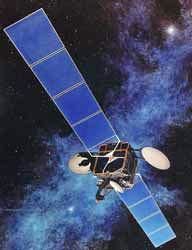 FS-1300 |
AKA: Eshail;Estrela do Sul;EUTE;LS-1300;Mabuhay;MBSAT;Protostar;Spainsat;SSL-1300;Thaicom;Viasat;XTAR-EUR. Status: Operational 1989. First Launch: 1989-06-05. Last Launch: 2015-09-30. Number: 102 . Gross mass: 6,700 kg (14,700 lb).
Total satellite power was from 5 to 12 kW continuously throughout the life of the spacecraft. On-board transmitter power - exceeding 5,000 RF watts -- could accommodate as many as 70 active transponders. Launch masses ranged up to 5,500 kg and the spacecraft was equipped with a bipropellant propulsion system. The 1300S version provided up to 40 percent greater capacity than the 1300. Total satellite power ranged from 12 to 18 kW throughout the life of the spacecraft. On-board transmitter power - approaching 10,000 RF watts -- could accommodate as many as 90 active transponders. Launch masses up to 6,700 kilograms were possible and the spacecraft was equipped with an ion station-keeping engine to supplement the bipropellant propulsion system. Some FS 1300 series satellites were retired after 17 years of successful service, more than twice their design life. A 4 m diameter payload fairing was required.
More at: FS-1300.
| Superbird A, A1, B, B1 Communication satellite built by Space Systems/Loral (SS/L) for Space Communications Corporation (SCC), Japan. Launched 1989 - 1992. Used the SSL-1300 bus. |
| Intelsat 7 (701, 702, 703, 704, 705, 709) / NSS 703 Null |
| GOES-Next American earth weather satellite. Geostationary Environmental Satellite. Meteorology satellite built by Space Systems/Loral (SS/L) for NOAA, USA. Launched 1994 - 2001. Used the SSL-1300 bus. |
| Intelsat 7A (706, 707, 708) Communication satellite built by Space Systems/Loral (SS/L) for Intelsat, International. Launched 1995 - 1996. Used the SSL-1300 bus. |
| N-Star a, b Communication satellite built by Space Systems/Loral (SS/L) for NTT-DoCoMo, Japan. Launched 1995 - 1996. Used the SSL-1300 bus. |
| Tempo 2 / DirecTV 5, 6 Null |
| Telstar 5, 6, 7 / Intelsat Americas 5, 6, 7 / Galaxy 25, 26, 27 Null |
| PAS 6 Communication satellite built by Space Systems/Loral (SS/L) for PanAmSat, USA. Launched 1997. Used the SSL-1300 bus. |
| Agila 2 / ABS 5 / ABS 3 Null |
| APStar 2R / Telstar 10 Null |
| PAS 7 / Intelsat 7 Null |
| PAS 8 / Intelsat 8 Null |
| EchoStar 5, 6 / Ciel 1 / Bermudasat 1 Null |
| Orion 2 / Telstar 12 Null |
| MTSat 1, 1R (Himawari 6) Null |
| Sirius FM1, FM2, FM3, FM4 (Radiosat 1, 2, 3, 4) Null |
| Europe*Star 1 / PAS 12 / Intelsat 12 Null |
| Intelsat 9 (901, 902, 903, 904, 905, 906, 907) Communication satellite built by Space Systems/Loral (SS/L) for Intelsat, International. Launched 2001 - 2003. Used the SSL-1300HL bus. |
| EchoStar 8 Communication (Direct Broadcasting) satellite built by Space Systems/Loral (SS/L) for Dish Network Corporation (EchoStar), USA. Launched 2002. Used the SSL-1300 bus. |
| Optus C1 (Optus and Defence C1) Null |
| EchoStar 9 (Telstar 13, Intelsat Americas 13, Galaxy 23) Null |
| Telstar 14 / Estrela do Sul 1 Null |
| MBSat 1( ABS 2i( ABS 4 (Mobisat) Null |
| DirecTV 7S, 9S Communication satellite built by Space Systems/Loral (SS/L) for DirecTV, USA. Launched 2004 - 2006. Used the SSL-1300 bus. |
| Telstar 18 / APStar 5 Null |
| XTAR-EUR XTAR-EUR was a Spanish X-band military communications satellite operated by Hisdesa. Used the [FS-1300] bus. |
| DirecTV 8 Communication satellite built by Space Systems/Loral (SS/L) for DirecTV, USA. Launched 2005. Used the SSL-1300 bus. |
| Intelsat Americas 8 (Telstar 8, 9) / Galaxy 28 Null |
| iPStar 1 (Thaicom 4) Null |
| Spainsat 1 / XTAR-LANT Null |
| SATMEX 6 / Eutelsat 113 West A Null |
| Galaxy 16, 18 Communication satellite built by Space Systems/Loral (SS/L) for PanAmSat, USA. Launched 2006 - 2008. Used the SSL-1300 bus. |
| WildBlue 1 Communication satellite built by Space Systems/Loral (SS/L) for Wild Blue, USA. Launched 2006. Used the SSL-1300 bus. |
| ICO G1 / DBSD G1 / EchoStar G1 Null |
| ProtoStar 1 -> Intelsat 25 Communication satellite built by Space Systems/Loral (SS/L) for ProtoStar, USA. Launched 2008. Used the SSL-1300 bus. |
| EchoStar 11, 15 Communication (Direct Broadcasting) satellite built by Space Systems/Loral (SS/L) for Dish Network Corporation (EchoStar), USA. Launched 2008 - 2010. Used the SSL-1300 bus. |
| Galaxy 19 Communication satellite built by Space Systems/Loral (SS/L) for Intelsat, USA. Launched 2008. Used the SSL-1300 bus. |
| 20.20 comsat American Loral communications satellite. Design of 2008, provided greater digital communications capacity by integrating next-generation technologies with the proven reliability of traditional concepts and products of the FS 1300 series. |
| Telstar 11N Communication satellite built by Space Systems/Loral (SS/L) for Loral Skynet => Telesat, USA. Launched 2009. Used the SSL-1300LL bus. |
| Sirius FM5 (Radiosat 5) Null |
| TerreStar 1, 2 / EchoStar T1, T2 Null |
| AsiaSat 5, 7 / Thaicom 6A Null |
| Nimiq 5 Communication satellite built by Space Systems/Loral (SS/L) for Telesat Canada, Canada. Launched 2009. Used the SSL-1300 bus. |
| NSS 12 Communication satellite built by Space Systems/Loral (SS/L) for SES New Skies, Netherlands. Launched 2009. Used the SSL-1300 bus. |
| Intelsat 14 Communication satellite built by Space Systems/Loral (SS/L) for Intelsat, International. Launched 2009. Used the SSL-1300 bus. |
| EchoStar 14 Communication (Direct Broadcasting) satellite built by Space Systems/Loral (SS/L) for Dish Network Corporation (EchoStar), USA. Launched 2010. Used the SSL-1300 bus. |
| XM 5 Communication satellite built by Space Systems/Loral (SS/L) for XM Satellite Radio Holdings Inc., USA. Launched 2010. Used the SSL-1300S bus. |
| Intelsat 17 Communication satellite built by Space Systems/Loral (SS/L) for Intelsat, International. Launched 2010. Used the SSL-1300 bus. |
| Hispasat 1E / Hispasat 30W-5 Null |
| Telstar 14R / Estrela do Sul 2 Null |
| QuetzSat 1 Communication satellite built by Space Systems/Loral (SS/L) for QuetzSat SRL de CV (SES Satellite Leasing Limited, Grupo Medcom/Mexico), Mexico. Launched 2011. Used the SSL-1300 bus. |
| ViaSat 1 Communication satellite built by Space Systems/Loral (SS/L) for ViaSat Inc., USA. Launched 2011. Used the SSL-1300 bus. |
| SES 4 Communication satellite built by Space Systems/Loral (SS/L) for SES New Skies => SES World Skies, Netherlands. Launched 2012. Used the SSL-1300 bus. |
| Nimiq 6 Communication satellite built by Space Systems/Loral (SS/L) for Telesat Canada, Canada. Launched 2012. Used the SSL-1300 bus. |
| Intelsat 19 Communication satellite built by Space Systems/Loral (SS/L) for Intelsat, International. Launched 2012. Used the SSL-1300 bus. |
| Jupiter 1 / EchoStar 17 Null |
| SES 5 / Astra 4B Null |
| Intelsat 20 Communication satellite built by Space Systems/Loral (SS/L) for Intelsat, International. Launched 2012. Used the SSL-1300 bus. |
| EchoStar 16 Communication (Direct Broadcasting) satellite built by Space Systems/Loral (SS/L) for Dish Network Corporation (EchoStar), USA. Launched 2012. Used the SSL-1300 bus. |
| Amazonas 3 Communication satellite built by Space Systems/Loral (SS/L) for Hispasat, Spain. Launched 2013. Used the SSL-1300 bus. |
| SATMEX 8 / Eutelsat 117 West A Null |
| Anik G1 Communication satellite built by Space Systems/Loral (SS/L) for Telesat Canada, Canada. Launched 2013. Used the SSL-1300 bus. |
| Eutelsat 25B / Es'hail 1 Null |
| Sirius FM6 (Radiosat 6) Null |
| ABS 2 (ST 3, Koreasat 8) Null |
| AsiaSat 8 / AMOS 7 Null |
| AsiaSat 6 / Thaicom 7 Null |
| Optus 10 Communication satellite built by Space Systems/Loral (SS/L) for Singtel Optus, Australia. Launched 2014. Used the SSL-1300LL bus. |
| Intelsat 30, 31 / DLA 1, 2 (ISDLA 1, 2) Null |
| DirecTV 14 Communication satellite built by Space Systems/Loral (SS/L) for DirecTV, USA. Launched 2014. Used the SSL-1300 bus. |
| Thor 7 Communication satellite built by Space Systems/Loral (SS/L) for Telenor, Norway. Launched 2015. Used the SSL-1300 bus. |
| Star One C4 Communication satellite built by Space Systems/Loral (SS/L) for Star One (EMBRATEL), Bolivarsat, Brazil. Launched 2015. Used the SSL-1300 bus. |
| Intelsat 34 (Hispasat 55W-2) Null |
| NBN-Co 1A, 1B (Sky Muster 1, 2) Null |
| Eutelsat 65 West A Communication satellite built by Space Systems/Loral (SS/L) for Eutelsat, International. Launched 2016. Used the SSL-1300 bus. |
| JCSat 14 (JCSat 2B) Null |
| BRIsat Communication satellite built by Space Systems/Loral (SS/L) for Bank Rakyat Indonesia (BRI), Indonesia. Launched 2016. Used the SSL-1300 bus. |
| EchoStar 18 Communication (Direct Broadcasting) satellite built by Space Systems/Loral (SS/L) for Dish Network Corporation (EchoStar), USA. Launched 2016. Used the SSL-1300 bus. |
| JCSat 16 Communication satellite built by Space Systems/Loral (SS/L) for JSAT Corporation, Japan. Launched 2016. Used the SSL-1300 bus. |
| Intelsat 36 Communication satellite built by Space Systems/Loral (SS/L) for Intelsat, International. Launched 2016. Used the SSL-1300 bus. |
| Jupiter 2 / EchoStar 19 Null |
| JCSat 15 (JCSat 110A) Null |
| Star One D1 Communication satellite built by Space Systems/Loral (SS/L) for Star One (EMBRATEL), Brazil. Launched 2016. Used the SSL-1300 bus. |
| EchoStar 23 Communication (Direct Broadcasting) satellite built by Space Systems/Loral (SS/L) for Dish Network Corporation (EchoStar), USA. Launched 2017. Used the SSL-1300 bus. |
| Amazonas 5 Communication satellite built by Space Systems/Loral (SS/L) for Hispasat. Used the SSL-1300 bus. |
| AsiaSat 9 Communicationsatellite built by Space Systems/Loral (SS/L) for Asia Satellite Telecommunications Company, GeoMetWatch Corp.. Used the SSL-1300 bus. |
| AssureSat 1, 2 Communication satellite built by Space Systems/Loral (SS/L) for AssureSat. Used the SSL-1300 bus. |
| Azerspace 2/Intelsat 38 Null |
| BSat 4a Communicationsatellite built by Space Systems/Loral (SS/L) for Broadcasting Satellite System Corporation (B-SAT). Used the SSL-1300 bus. |
| BulgariaSat 1 Communication satellite built by Space Systems/Loral (SS/L) for Bulgaria Sat. Used the SSL-1300 bus. |
| CMBStar 1 (EchoStar 13) Null |
| Eutelsat 7C Communication satellite built by Space Systems/Loral (SS/L) for Eutelsat, International. Used the SSL-1300 (all electric) bus. |
| Fordsat 1, 2, 3 Communicationsatellite built by Ford Aerospace for Ford Aerospace Satellite Services Corporation. Used the Supersat (FS-1300) bus. |
| Hispasat 30W-6 (Hispasat 1F) Null |
| Intelsat 39 Communication satellite built by Space Systems/Loral (SS/L) for Intelsat, International. Used the SSL-1300 bus. |
| L-Star 1, 2 Communication satellite built by Space Systems/Loral (SS/L) for Asia Broadcasting and Communications Network (ABCN). Used the SSL-1300 bus. |
| M2A Communication satellite built by Space Systems/Loral (SS/L); Alcatel Espace (payload) for Pasifik Satelit Nasantara (PSN). Used the SSL-1300S bus. |
| PSN 6 Communication satellite built by Space Systems/Loral (SS/L) for PT Pasifik Satelit Nusantara. Used the SSL-1300 bus. |
| Psyche (Discovery 14) Null |
| Restore-L Servicing satellite built by SSL for NASA, USA. Used the SSL-1300 bus. |
| S2M 1 Communication (MSS) satellite built by Space Systems/Loral (SS/L) for S2M. Used the SSL-1300S bus. |
| SATMEX 7 Communication satellite built by Space Systems Loral for Satelites Mexicanos S.A. de C.V. (Satmex). Used the SSL-1300 bus. |
| SXM 7, 8 Communication satellite built by Space Systems/Loral (SS/L) for SiriusXM, USA. Used the SSL-1300 bus. |
| Telkom 4 Communication satellite built by Space Systems/Loral (SS/L) for PT Telekomunikasi Indonesia Tbk., Indonesia. Used the SSL-1300 bus. |
| Telstar 18V (Telstar 18 Vantage) / APStar 5C Null |
| Telstar 19V (Telstar 19 Vantage) Null |
Family: Communications, Earth, Geosynchronous orbit. Country: USA. Spacecraft: Apstar. Launch Vehicles: Atlas, Proton, Ariane, Ariane 44LP, Ariane 44L, Ariane 42P, Ariane 44P, Atlas IIA, Atlas IIAS, Proton-K/DM-2M, H-II, Chang Zheng 3B, Ariane 5, Ariane 5G, Zenit-3SL, Atlas 3A, Atlas V, Proton-M/Briz-M, Ariane 5ECA, H-IIA 2022, Atlas V 431, Ariane 5GS, Atlas V 421, Zenit-3SLB, Falcon 9 v1.1, Falcon 9. Projects: DirecTV, Galaxy, Intelsat, N-STAR, Panamsat, Sirius, Superbird, Telstar series, Tempo. Launch Sites: Cape Canaveral, Baikonur, Cape Canaveral LC36A, Cape Canaveral LC40, Baikonur LC81/23, Cape Canaveral LC36B, Cape Canaveral LC41, Baikonur LC81/24, Tanegashima, Kourou, Baikonur LC200/39, Xichang, Baikonur LC45/1, Kourou ELA2, Xichang LC2, Tanegashima Y, Kourou ELA3, Kiritimati. Agency: Echostar, Space Systems. Bibliography: 2, 274, 278, 279, 296, 4, 5, 552, 554, 6, 6507, 12393, 12394, 12395, 12396, 12397, 12398, 12399, 12400, 12401, 12402, 12403, 12404, 12405, 12406, 12407, 12408, 12409, 12410, 12411, 12412, 12413, 12414, 12415, 12416, 12417, 12418, 12419, 12420, 12421, 12422, 12423, 12424, 12425, 12426, 12427.
 | ABS 2 Credit: Manufacturer Image |
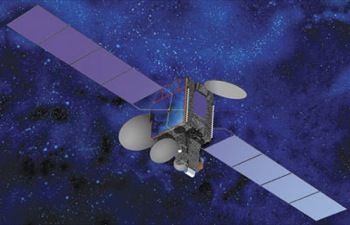 | Agila 2 Credit: Manufacturer Image |
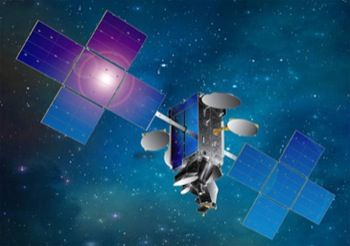 | Amazonas 3 Credit: Manufacturer Image |
 | Amazonas 5 Credit: Manufacturer Image |
 | Anik G-1 Credit: Manufacturer Image |
 | Apstar 2R Credit: Manufacturer Image |
 | Apstar 5 Credit: Manufacturer Image |
 | Asiasat 5 Credit: Manufacturer Image |
 | Asiasat 6 Credit: Manufacturer Image |
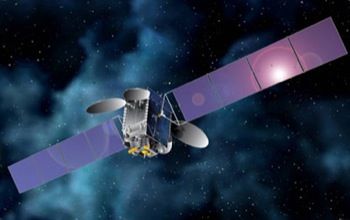 | Asiasat 8 Credit: Manufacturer Image |
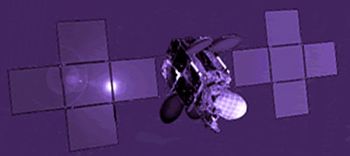 | AssureSat 1 Credit: Manufacturer Image |
 | BRIsat Credit: Manufacturer Image |
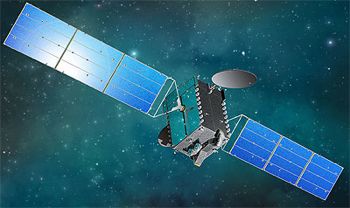 | BSat 4a Credit: Manufacturer Image |
 | BulgariaSat 1 Credit: Manufacturer Image |
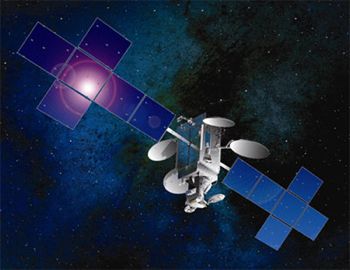 | DirecTV-14 Credit: Manufacturer Image |
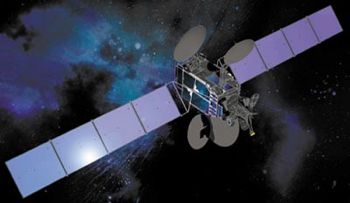 | DirecTV 7S Credit: Manufacturer Image |
 | L-Star 1 Credit: Manufacturer Image |
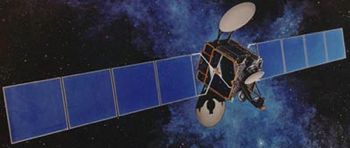 | Echostar 5 Credit: Manufacturer Image |
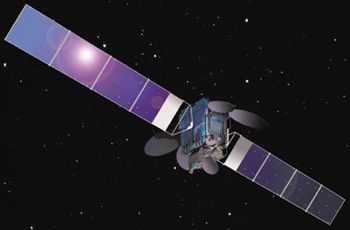 | Echostar 8 Credit: Manufacturer Image |
 | Echostar 9 (Telstar Credit: Manufacturer Image |
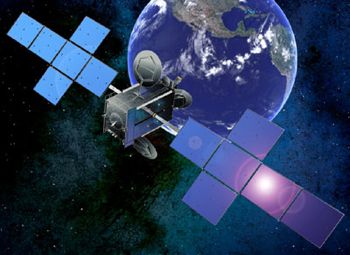 | Echostar 11 Credit: Manufacturer Image |
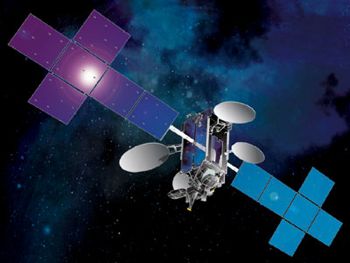 | Echostar 14 Credit: Manufacturer Image |
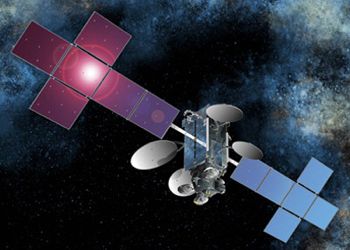 | Echostar 16 Credit: Manufacturer Image |
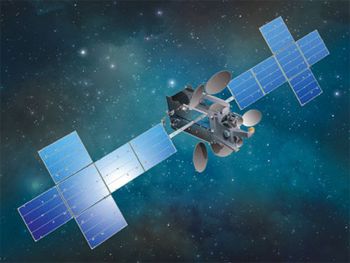 | EchoStar 23 Credit: Manufacturer Image |
 | Estrela do Sul 1 (Sk Credit: Manufacturer Image |
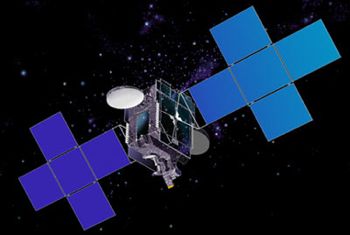 | EuropeStar F1 Credit: Manufacturer Image |
 | Eshail 1 Credit: Manufacturer Image |
 | Eutelsat 65 West A Credit: Manufacturer Image |
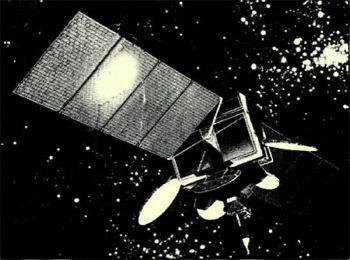 | Fordsat 1 Credit: Manufacturer Image |
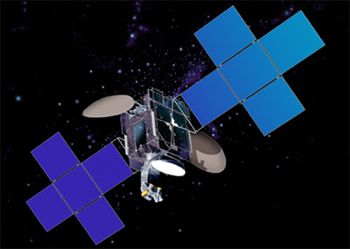 | Galaxy 16 Credit: Manufacturer Image |
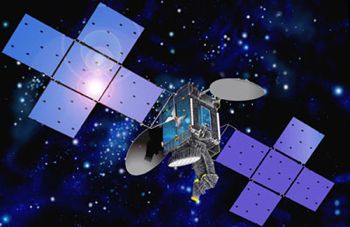 | Galaxy 19 Credit: Manufacturer Image |
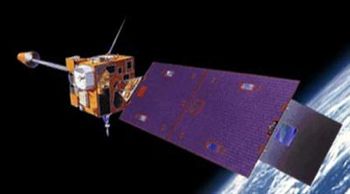 | GOES 8 Credit: Manufacturer Image |
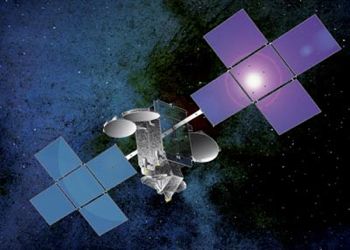 | Hispasat 1E Credit: Manufacturer Image |
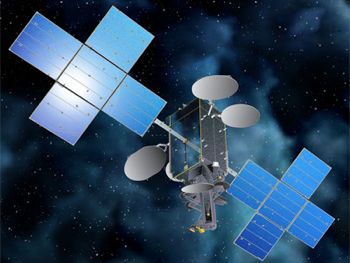 | Hispasat 1F Credit: Manufacturer Image |
 | ICO G1 Credit: Manufacturer Image |
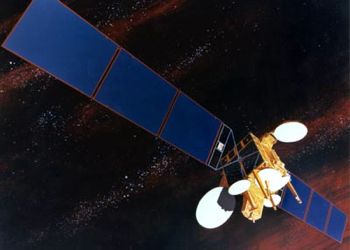 | Intelsat 701 Credit: Manufacturer Image |
 | Intelsat 901 Credit: Manufacturer Image |
 | Intelsat IS-14 Credit: Manufacturer Image |
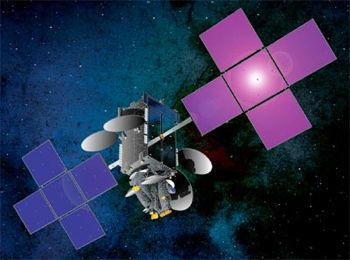 | Intelsat 17 Credit: Manufacturer Image |
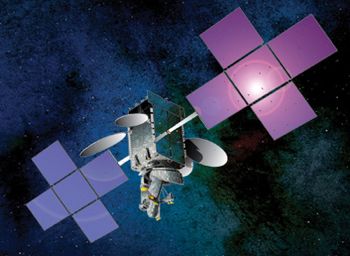 | Intelsat 19 Credit: Manufacturer Image |
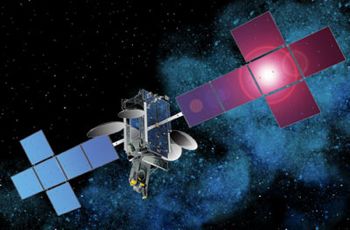 | Intelsat 20 Credit: Manufacturer Image |
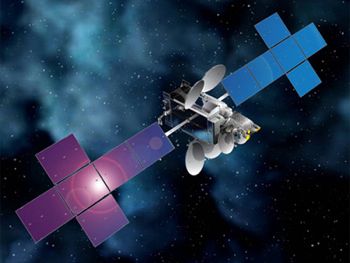 | Intelsat IS-30 Credit: Manufacturer Image |
 | Intelsat 34 Credit: Manufacturer Image |
 | Intelsat 36 Credit: Manufacturer Image |
 | Intelsat 706 Credit: Manufacturer Image |
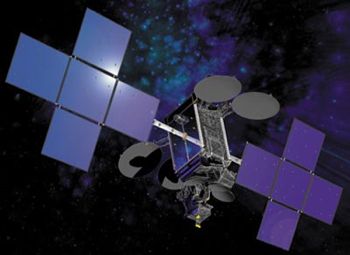 | Ipstar 1 Credit: Manufacturer Image |
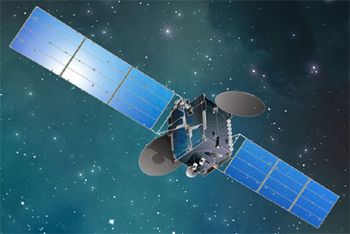 | JCSat 15 Credit: Manufacturer Image |
 | JCSat 16 Credit: Manufacturer Image |
 | Echostar 17 Credit: Manufacturer Image |
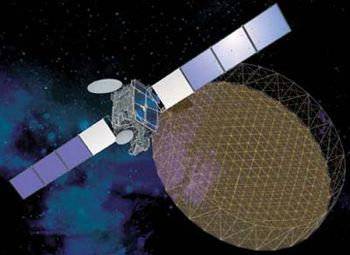 | MBSAT Credit: Manufacturer Image |
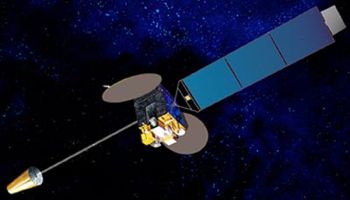 | Himawari 6 Credit: Manufacturer Image |
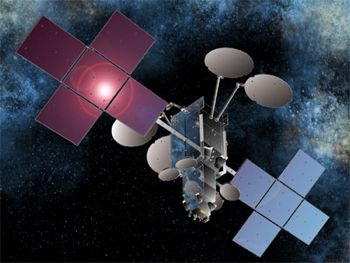 | NBN-Co 1A Credit: Manufacturer Image |
 | Nimiq-5 Credit: Manufacturer Image |
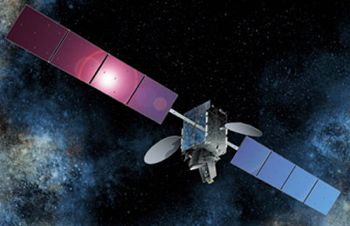 | Nimiq 6 Credit: Manufacturer Image |
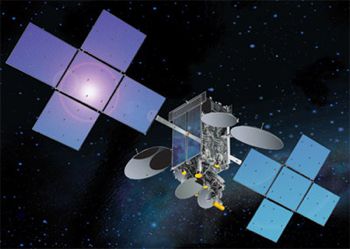 | NSS 12 Credit: Manufacturer Image |
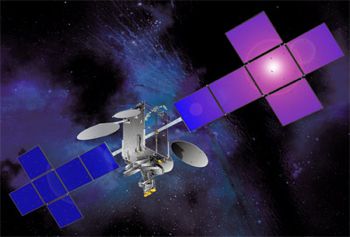 | SES-4 Credit: Manufacturer Image |
 | N-Star a Credit: Manufacturer Image |
 | Optus 10 Credit: Manufacturer Image |
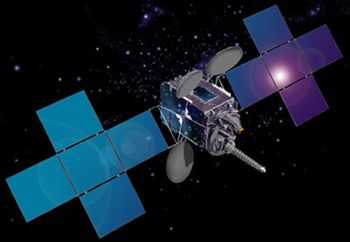 | Optus and Defence 1 Credit: Manufacturer Image |
 | Orion 2 Credit: Manufacturer Image |
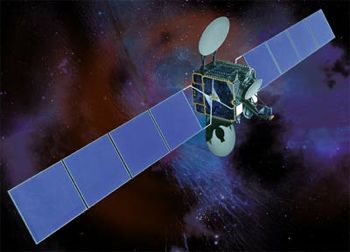 | Panamsat 6 Credit: Manufacturer Image |
 | Panamsat 7 Credit: Manufacturer Image |
 | Panamsat 8 Credit: Manufacturer Image |
 | Protostar 1 / Intels Credit: Manufacturer Image |
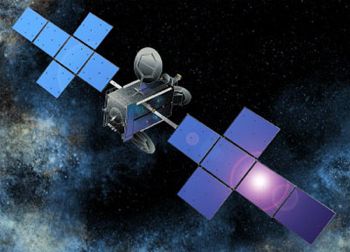 | Quetzsat 1 Credit: Manufacturer Image |
 | S2M 1 Credit: Manufacturer Image |
 | Satmex 6 Credit: Manufacturer Image |
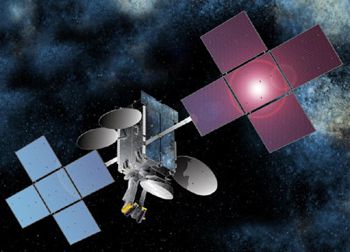 | Satmex 8 Credit: Manufacturer Image |
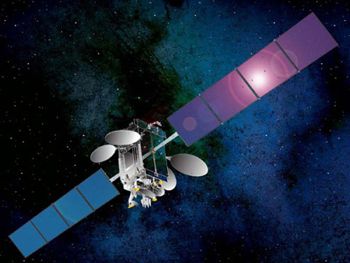 | SES 5 Credit: Manufacturer Image |
 | Sirius 2 Credit: Manufacturer Image |
 | Sirius FM-5 Credit: Manufacturer Image |
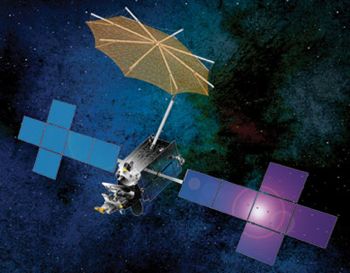 | Sirius FM6 Credit: Manufacturer Image |
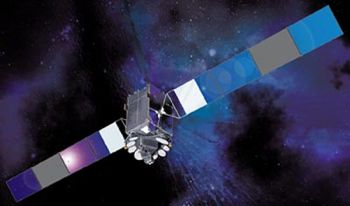 | Spainsat Credit: Manufacturer Image |
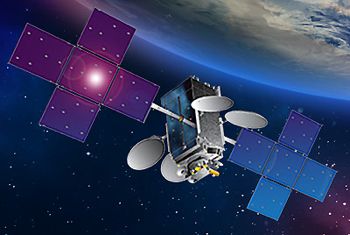 | Star One C4 Credit: Manufacturer Image |
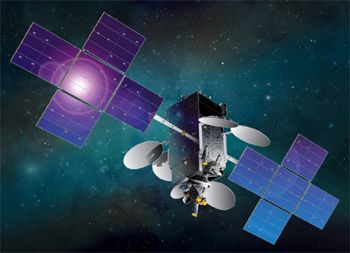 | Star One D1 Credit: Manufacturer Image |
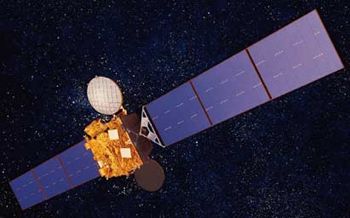 | Superbird A Credit: Manufacturer Image |
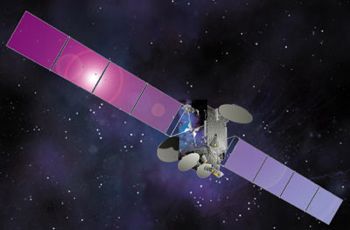 | Telstar 11N Credit: Manufacturer Image |
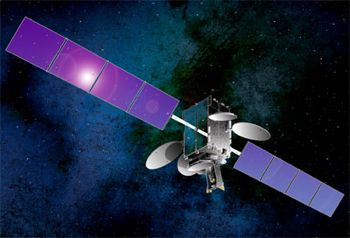 | Telstar 14R Credit: Manufacturer Image |
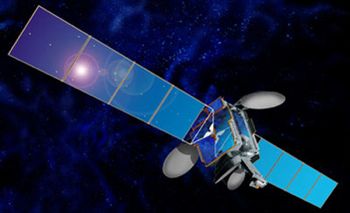 | Telstar 5 Credit: Manufacturer Image |
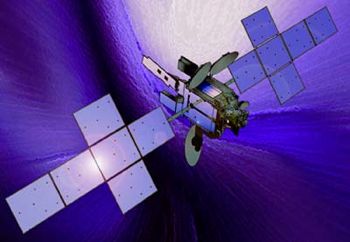 | Intelsat Americas 8 Credit: Manufacturer Image |
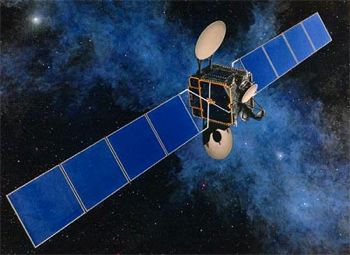 | Tempo 2 Credit: Manufacturer Image |
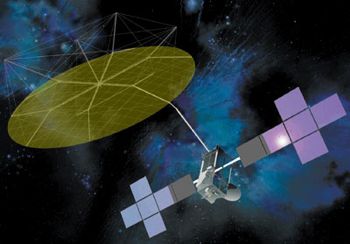 | Terrestar-1 Credit: Manufacturer Image |
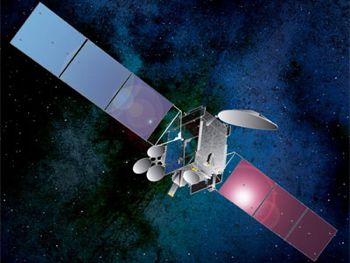 | Thor 7 Credit: Manufacturer Image |
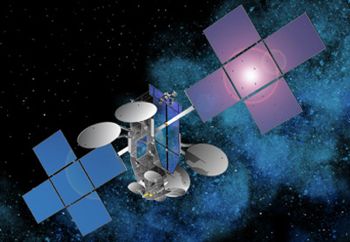 | Viasat 1 Credit: Manufacturer Image |
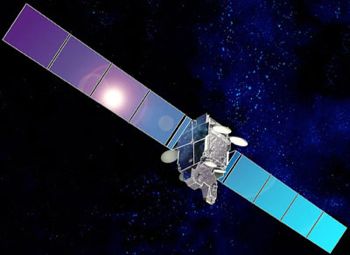 | WildBlue 1 Credit: Manufacturer Image |
 | XM-5 Credit: Manufacturer Image |
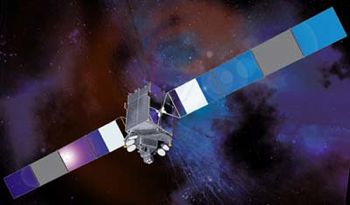 | XTAR-EUR Credit: Manufacturer Image |
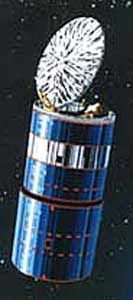 | Sirius 1 Credit: Manufacturer Image |
1989 June 5 - . 22:37 GMT - . Launch Site: Kourou. Launch Complex: Kourou ELA2. LV Family: Ariane. Launch Vehicle: Ariane 44L.
- Superbird A - .
Mass: 2,489 kg (5,487 lb). Nation: Japan.
Agency: SCC.
Program: Superbird.
Class: Communications.
Type: Civilian communications satellite. Spacecraft: FS-1300.
Completed Operations Date: 1991-02-01 . USAF Sat Cat: 20040 . COSPAR: 1989-041A. Apogee: 35,944 km (22,334 mi). Perigee: 35,931 km (22,326 mi). Inclination: 2.50 deg. Period: 1,443.80 min.
Japanese domestic business communications; 158 deg E. Positioned in geosynchronous orbit at 158 deg E in 1989-1990 As of 6 September 2001 located at 41.59 deg E drifting at 1.921 deg W per day. As of 2007 Mar 11 located at 166.35W drifting at 1.878W degrees per day.
1990 February 22 - . 23:17 GMT - . Launch Site: Kourou. Launch Complex: Kourou ELA2. LV Family: Ariane. Launch Vehicle: Ariane 44L. FAILURE: Exploded 100 seconds after liftoff due to water line blockage. This was caused by a piece of cloth found in the first stage Viking engine water cooling system.. Failed Stage: 1.
- Superbird B - . Mass: 2,492 kg (5,493 lb). Nation: Japan. Agency: SCC. Program: Superbird. Class: Communications. Type: Civilian communications satellite. Spacecraft: FS-1300. Decay Date: 1990-02-23 . Apogee: 9.00 km (5.50 mi). Launched with BS-2X. Targeted for Geosynch orbit..
1992 February 26 - . 23:58 GMT - . Launch Site: Kourou. Launch Complex: Kourou ELA2. LV Family: Ariane. Launch Vehicle: Ariane 44L.
- Superbird B1 - .
Mass: 2,560 kg (5,640 lb). Nation: Japan.
Agency: SCC.
Program: Superbird.
Class: Communications.
Type: Civilian communications satellite. Spacecraft: FS-1300.
USAF Sat Cat: 21893 . COSPAR: 1992-010A. Apogee: 36,206 km (22,497 mi). Perigee: 36,057 km (22,404 mi). Inclination: 0.90 deg. Period: 1,453.80 min.
Stationed at 162 deg E. Domestic communications. Launching organization Arianespace. Launch time 2358 GMT. Positioned in geosynchronous orbit at 162 deg E in 1992-1999 As of 4 September 2001 located at 19.90 deg W drifting at 4.382 deg W per day. As of 2007 Mar 9 located at 164.51E drifting at 4.378W degrees per day.
1992 December 1 - . 22:48 GMT - . Launch Site: Kourou. Launch Complex: Kourou ELA2. LV Family: Ariane. Launch Vehicle: Ariane 42P.
- Superbird A1 - .
Mass: 2,780 kg (6,120 lb). Nation: Japan.
Agency: SCC.
Program: Superbird.
Class: Communications.
Type: Civilian communications satellite. Spacecraft: FS-1300.
USAF Sat Cat: 22253 . COSPAR: 1992-084A. Apogee: 35,800 km (22,200 mi). Perigee: 35,774 km (22,228 mi). Inclination: 0.00 deg. Period: 1,436.10 min.
Stationed at 158 deg E. Domestic communications. Launching states: Japan and France. Launch time 2248 GMT. Positioned in geosynchronous orbit at 158 deg E in 1993-1999 As of 31 August 2001 located at 157.95 deg E drifting at 0.011 deg W per day. As of 2007 Mar 9 located at 158.03E drifting at 0.006W degrees per day.
1993 October 22 - . 06:46 GMT - . Launch Site: Kourou. Launch Complex: Kourou ELA2. LV Family: Ariane. Launch Vehicle: Ariane 44LP.
- Intelsat 701 - .
Payload: Intelsat 7 F 1. Mass: 3,650 kg (8,040 lb). Nation: International.
Agency: Intelsat.
Program: Intelsat.
Class: Communications.
Type: Civilian communications satellite. Spacecraft: FS-1300.
USAF Sat Cat: 22871 . COSPAR: 1993-066A. Apogee: 35,802 km (22,246 mi). Perigee: 35,769 km (22,225 mi). Inclination: 0.00 deg. Period: 1,436.10 min.
International communications. The Intelsat 7 and 7A series were nearly identical except for an increase in the number of Ku-band transponders in the 7A series. Spacecraft: 3-axis stabilised. Hydrazine propulsion system. Two large solar panels with 1-axis articulation provide 3900W BOL. Payload: 7: 26 C-Band and 10 Ku-Band transponders.18,000 telephone calls and 3 colour TV broadcasts simultaneously. Or up to 90,000 telephone circuits using digital circuit multiplication equipment (DCME).7A: 26 C-Band and 14 Ku-Band transponders.22,500 telephone calls and 3 colour TV broadcasts simultaneously. Or up to 112,500 telephone circuits using DCME. Three independently steerable, high-powered, Ku-band spot beams. Independently steerable C-band spot beam coverage. Positioned in geosynchronous orbit at 121 deg E in 1993; 174 deg E in 1994-1997; 180 deg W in 1997-1999 As of 6 September 2001 located at 179.91 deg W drifting at 0.004 deg W per day. As of 2007 Mar 9 located at 179.97W drifting at 0.001E degrees per day.
1994 April 13 - . 06:04 GMT - . Launch Site: Cape Canaveral. Launch Complex: Cape Canaveral LC36B. LV Family: Atlas. Launch Vehicle: Atlas I.
- GOES 8 - .
Payload: GOES I. Mass: 2,105 kg (4,640 lb). Nation: USA.
Agency: NOAA.
Program: GOES.
Class: Earth.
Type: Weather satellite. Spacecraft Bus: FS-1300.
Spacecraft: GOES-Next.
USAF Sat Cat: 23051 . COSPAR: 1994-022A. Apogee: 35,807 km (22,249 mi). Perigee: 35,770 km (22,220 mi). Inclination: 0.10 deg. Period: 1,436.20 min.
Geostationary Environmental Satellite. Stationed at 75 deg W. Space craft engaged in investigation of spaceflight techniques and technology (US Cat A). Launch vehicle put payload into supersynchronous earth orbit with MRS trajectory option. Positioned in geosynchronous orbit at 90 deg W in 1994-1995; 75 deg W in 1995-1999 As of 5 September 2001 located at 74.78 deg W drifting at 0.019 deg E per day. NASA announced that GOES-8 was "de-orbited" (presumably moved to a sub-synchronous orbit) on May 5, 2004 after 10 years of service. As of 2007 Mar 11 located at 87.46E drifting at 4.935W degrees per day.
1994 June 17 - . 07:07 GMT - . Launch Site: Kourou. Launch Complex: Kourou ELA2. LV Family: Ariane. Launch Vehicle: Ariane 44LP.
- Intelsat 702 - .
Mass: 3,695 kg (8,146 lb). Nation: International.
Agency: Intelsat.
Program: Intelsat.
Class: Communications.
Type: Civilian communications satellite. Spacecraft: FS-1300.
USAF Sat Cat: 23124 . COSPAR: 1994-034A. Apogee: 35,795 km (22,241 mi). Perigee: 35,776 km (22,230 mi). Inclination: 0.0200 deg. Period: 1,436.07 min.
Stationed at 1.03 deg W. Positioned in geosynchronous orbit at 38 deg W in 1994; 1 deg W in 1994-1996; 177 deg E in 1996-1999 As of 5 September 2001 located at 175.99 deg E drifting at 0.001 deg E per day. As of 2007 Mar 9 located at 54.82E drifting at 0.001E degrees per day.
1994 October 6 - . 06:35 GMT - . Launch Site: Cape Canaveral. Launch Complex: Cape Canaveral LC36B. LV Family: Atlas. Launch Vehicle: Atlas IIAS.
- Intelsat 703 - .
Payload: NSS 703. Mass: 3,656 kg (8,060 lb). Nation: International.
Agency: Intelsat.
Program: Intelsat.
Class: Communications.
Type: Civilian communications satellite. Spacecraft: FS-1300.
USAF Sat Cat: 23305 . COSPAR: 1994-064A. Apogee: 35,792 km (22,240 mi). Perigee: 35,779 km (22,231 mi). Inclination: 0.0400 deg. Period: 1,436.07 min.
38 C-band and 20 Ku-band transponders. Initially positioned in geosynchronous orbit at 177 deg E in 1994-1996. Then reassigned to Intelsat subsidiary New Skies, redesignated NSS 703, and moved to 57 deg E after 1996. At the crossroads of three continents, NSS-703 provided cross-connectivity for Europe, Africa and Asia. NSS-703 was used for video contribution from Europe to India and Africa, and was capable of bringing signals from London to India and Australia in one hop. NSS-703's coverage included a global beam, and two C-band hemispheric beams, which covered Africa and the triangle from Eastern Iran to Japan and Australia, including all of India and China. Three steerable Ku-band spot beams targeted Europe and Iran, Central Asia and Afghanistan-Pakistan-North India. Expected end of life March 2009. As of 2007 Mar 9 located at 56.96E drifting at 0.001E degrees per day.
1995 January 10 - . 06:18 GMT - . Launch Site: Cape Canaveral. Launch Complex: Cape Canaveral LC36B. LV Family: Atlas. Launch Vehicle: Atlas IIAS.
- Intelsat 704 - .
Mass: 3,656 kg (8,060 lb). Nation: International.
Agency: Intelsat.
Program: Intelsat.
Class: Communications.
Type: Civilian communications satellite. Spacecraft: FS-1300.
USAF Sat Cat: 23461 . COSPAR: 1995-001A. Apogee: 36,113 km (22,439 mi). Perigee: 36,075 km (22,415 mi). Inclination: 2.20 deg. Period: 1,451.80 min.
Stationed at 66.0 deg E. Launch vehicle put payload into supersynchronous earth orbit with MRS trajectory option. Positioned in geosynchronous orbit at 66 deg E in 1995-1999 As of 29 August 2001 located at 66.03 deg E drifting at 0.005 deg W per day. As of 2007 Mar 10 located at 66.03E drifting at 0.002W degrees per day.
1995 March 22 - . 06:18 GMT - . Launch Site: Cape Canaveral. Launch Complex: Cape Canaveral LC36B. LV Family: Atlas. Launch Vehicle: Atlas IIAS.
- Intelsat 705 - .
Mass: 3,669 kg (8,088 lb). Nation: International.
Agency: Intelsat.
Program: Intelsat.
Class: Communications.
Type: Civilian communications satellite. Spacecraft: FS-1300.
USAF Sat Cat: 23528 . COSPAR: 1995-013A. Apogee: 35,798 km (22,243 mi). Perigee: 35,776 km (22,230 mi). Inclination: 0.00 deg. Period: 1,436.10 min.
Stationed at 50.1 deg W. Launch vehicle put payload into supersynchronous earth orbit with MRS trajectory option. Positioned in geosynchronous orbit at 50 deg W in 1995-1996; 18 deg W in 1996-1999 As of 5 September 2001 located at 17.97 deg W drifting at 0.006 deg W per day. As of 2007 Mar 11 located at 50.01W drifting at 0.007W degrees per day.
1995 May 17 - . 06:34 GMT - . Launch Site: Kourou. Launch Complex: Kourou ELA2. LV Family: Ariane. Launch Vehicle: Ariane 44LP.
- Intelsat 706 - . Mass: 4,180 kg (9,210 lb). Nation: International. Agency: Intelsat. Program: Intelsat. Class: Communications. Type: Civilian communications satellite. Spacecraft: FS-1300. USAF Sat Cat: 23571 . COSPAR: 1995-023A. Apogee: 35,798 km (22,243 mi). Perigee: 35,776 km (22,230 mi). Inclination: 0.00 deg. Period: 1,436.10 min. Stationed at 53.1 deg W. Positioned in geosynchronous orbit at 53 deg W in 1995-1999 As of 4 September 2001 located at 52.93 deg W drifting at 0.005 deg W per day. As of 2007 Mar 4 located at 50.24E drifting at 0.003E degrees per day..
1995 May 23 - . 05:52 GMT - . Launch Site: Cape Canaveral. Launch Complex: Cape Canaveral LC36B. LV Family: Atlas. Launch Vehicle: Atlas I.
- GOES 9 - .
Payload: GOES J. Mass: 2,105 kg (4,640 lb). Nation: USA.
Agency: NOAA.
Program: GOES.
Class: Earth.
Type: Weather satellite. Spacecraft Bus: FS-1300.
Spacecraft: GOES-Next.
USAF Sat Cat: 23581 . COSPAR: 1995-025A. Apogee: 35,911 km (22,314 mi). Perigee: 35,809 km (22,250 mi). Inclination: 0.20 deg. Period: 1,435.90 min.
Stationed at 135 deg W. Launch vehicle put payload into supersynchronous earth orbit with MRS trajectory option. Positioned in geosynchronous orbit at 90 deg W in 1995; 135 deg W in 1996-1998; 98-105 deg W in 1998-1999 As of 5 September 2001 located at 103.62 deg W drifting at 0.009 deg W per day. As of 2007 Mar 10 located at 159.81E drifting at 0.002W degrees per day.
1995 August 29 - . 06:41 GMT - . Launch Site: Kourou. Launch Complex: Kourou ELA2. LV Family: Ariane. Launch Vehicle: Ariane 44P.
- N-Star a - . Mass: 3,100 kg (6,800 lb). Nation: Japan. Agency: NTT. Program: N-STAR. Class: Communications. Type: Civilian communications satellite. Spacecraft: FS-1300. USAF Sat Cat: 23651 . COSPAR: 1995-044A. Apogee: 35,791 km (22,239 mi). Perigee: 35,782 km (22,233 mi). Inclination: 0.10 deg. Period: 1,436.10 min. Stationed at 131.9 deg E. Positioned in geosynchronous orbit at 132 deg E in 1995-1999 As of 1 September 2001 located at 131.99 deg E drifting at 0.017 deg W per day. As of 2007 Mar 11 located at 25.96E drifting at 4.123W degrees per day..
1996 February 5 - . 07:19 GMT - . Launch Site: Kourou. Launch Complex: Kourou ELA2. LV Family: Ariane. Launch Vehicle: Ariane 44P.
- N-STAR b - . Mass: 3,400 kg (7,400 lb). Nation: Japan. Agency: NTT. Program: N-STAR. Class: Communications. Type: Civilian communications satellite. Spacecraft: FS-1300. USAF Sat Cat: 23781 . COSPAR: 1996-007A. Apogee: 35,801 km (22,245 mi). Perigee: 35,775 km (22,229 mi). Inclination: 0.10 deg. Period: 1,436.20 min. Geostationary at 128.9E. Positioned in geosynchronous orbit at 136 deg E in 1996-1999 As of 1 September 2001 located at 136.01 deg E drifting at 0.012 deg W per day. As of 2007 Mar 9 located at 136.04E drifting at 0.012W degrees per day..
1996 February 14 - . 19:01 GMT - . Launch Site: Xichang. Launch Complex: Xichang LC2. LV Family: CZ. Launch Vehicle: Chang Zheng 3B. FAILURE: Guidance failure resulted in launch vehicle crashing 22 seconds after launch, killing or injuring 59 people.. Failed Stage: G.
- Intelsat 708 - .
Mass: 4,180 kg (9,210 lb). Nation: International.
Agency: PRC.
Program: Intelsat.
Class: Communications.
Type: Civilian communications satellite. Spacecraft: FS-1300.
First attempted launch of a new version in the Long March family. Began to experience an anomaly in attitude about 2 seconds after launch, pitching down and yawing to the right. It augured in nose down at T+22 seconds and exploded violently, utterly destroying the launcher and its payload. The Chief-Designer of the launch vehicle organised an analysis team on the same day of the accident. Interpretation and analysis of the telemetered data indicated that the crash was caused by a change in the inertial reference. The explosion killed six and injured 57. Two of the killed were senior engineers with CASC.
1996 March 14 - . 07:11 GMT - . Launch Site: Kourou. Launch Complex: Kourou ELA2. LV Family: Ariane. Launch Vehicle: Ariane 44LP.
- Intelsat 707 - .
Mass: 4,175 kg (9,204 lb). Nation: International.
Agency: Intelsat.
Program: Intelsat.
Class: Communications.
Type: Civilian communications satellite. Spacecraft: FS-1300.
USAF Sat Cat: 23816 . COSPAR: 1996-015A. Apogee: 35,798 km (22,243 mi). Perigee: 35,775 km (22,229 mi). Inclination: 0.00 deg. Period: 1,436.10 min.
GEO. 26 C-band, 14 K-band transponders. Geostationary at 0.9W. Positioned in geosynchronous orbit at 1 deg W in 1996-1999 As of 5 September 2001 located at 0.97 deg W drifting at 0.001 deg E per day. As of 2007 Mar 10 located at 53.03W drifting at 0.007W degrees per day.
1996 June 15 - . 06:55 GMT - . Launch Site: Kourou. Launch Complex: Kourou ELA2. LV Family: Ariane. Launch Vehicle: Ariane 44P.
- Intelsat 709 - . Mass: 3,694 kg (8,143 lb). Nation: International. Agency: Intelsat. Program: Intelsat. Class: Communications. Type: Civilian communications satellite. Spacecraft: FS-1300. USAF Sat Cat: 23915 . COSPAR: 1996-035A. Apogee: 35,795 km (22,241 mi). Perigee: 35,779 km (22,231 mi). Inclination: 0.00 deg. Period: 1,436.10 min. 36 transponders Geostationary at 50.0W. Positioned in geosynchronous orbit at 50 deg W in 1996-1999 As of 4 September 2001 located at 49.96 deg W drifting at 0.015 deg W per day. As of 2007 Mar 11 located at 85.17E drifting at 0.004W degrees per day..
1997 March 8 - . 06:01 GMT - . Launch Site: Cape Canaveral. Launch Complex: Cape Canaveral LC36A. LV Family: Atlas. Launch Vehicle: Atlas IIA.
- Tempo 2 - .
Mass: 3,640 kg (8,020 lb). Nation: USA.
Agency: TCI.
Manufacturer: Palo Alto.
Program: Tempo.
Class: Communications.
Type: Civilian communications satellite. Spacecraft: FS-1300.
USAF Sat Cat: 24748 . COSPAR: 1997-011A. Apogee: 35,792 km (22,240 mi). Perigee: 35,781 km (22,233 mi). Inclination: 0.00 deg. Period: 1,436.10 min.
Geosynchronous. Stationed over 118.7W Launch vehicle put payload into subsynchronous earth orbit with MRS trajectory option. Positioned in geosynchronous orbit at 119 deg W in 1997-1999 As of 5 September 2001 located at 118.82 deg W drifting at 0.001 deg W per day. As of 2007 Mar 10 located at 42.64E drifting at 4.479W degrees per day.
1997 April 25 - . 05:49 GMT - . Launch Site: Cape Canaveral. Launch Complex: Cape Canaveral LC36B. LV Family: Atlas. Launch Vehicle: Atlas I.
- GOES 10 - .
Payload: GOES K. Mass: 2,105 kg (4,640 lb). Nation: USA.
Agency: NOAA.
Manufacturer: Palo Alto.
Program: GOES.
Class: Earth.
Type: Weather satellite. Spacecraft Bus: FS-1300.
Spacecraft: GOES-Next.
USAF Sat Cat: 24786 . COSPAR: 1997-019A. Apogee: 35,799 km (22,244 mi). Perigee: 35,780 km (22,230 mi). Inclination: 0.40 deg. Period: 1,436.30 min.
Geosynchronous. Stationed over 105.7W Launch vehicle put payload into supersynchronous earth orbit with MRS trajectory option. Positioned in geosynchronous orbit at 105 deg W in 1997-1998; 135 deg W in 1998-1999 As of 6 September 2001 located at 135.09 deg W drifting at 0.037 deg W per day. As of 2007 Mar 11 located at 59.64W drifting at 0.009W degrees per day.
1997 May 24 - . 17:00 GMT - . Launch Site: Baikonur. Launch Complex: Baikonur LC81/23. LV Family: Proton. Launch Vehicle: Proton-K/DM-2M.
- Telstar 5 - . Mass: 3,700 kg (8,100 lb). Nation: USA. Agency: Skynet Palo Alto. Program: Telstar series. Class: Communications. Type: Civilian communications satellite. Spacecraft: FS-1300. USAF Sat Cat: 24812 . COSPAR: 1997-026A. Apogee: 35,794 km (22,241 mi). Perigee: 35,779 km (22,231 mi). Inclination: 0.00 deg. Period: 1,436.10 min. Geosynchronous. Stationed over 97.0W Positioned in geosynchronous orbit at 97 deg W in 1997-1999 As of 5 September 2001 located at 96.99 deg W drifting at 0.006 deg W per day. As of 2007 Mar 9 located at 97.04W drifting at 0.005W degrees per day..
1997 August 8 - . 06:46 GMT - . Launch Site: Kourou. Launch Complex: Kourou ELA2. LV Family: Ariane. Launch Vehicle: Ariane 44P.
- Panamsat 6 - . Payload: PAS 6. Mass: 3,420 kg (7,530 lb). Nation: USA. Agency: Panamsat. Manufacturer: Palo Alto. Program: Panamsat. Class: Communications. Type: Civilian communications satellite. Spacecraft: FS-1300. USAF Sat Cat: 24891 . COSPAR: 1997-040A. Apogee: 35,796 km (22,242 mi). Perigee: 35,778 km (22,231 mi). Inclination: 0.10 deg. Period: 1,436.10 min. Positioned in geosynchronous orbit at 43 deg W in 1997-2002. As of 2004 Oct 17 located at 96.68W drifting at 1.977W degrees per day..
1997 August 19 - . 17:50 GMT - . Launch Site: Xichang. Launch Complex: Xichang LC2. LV Family: CZ. Launch Vehicle: Chang Zheng 3B.
- Agila 2 - . Payload: Mabuhay. Mass: 2,820 kg (6,210 lb). Nation: Philippines. Agency: MPSC. Manufacturer: Palo Alto. Class: Communications. Type: Civilian communications satellite. Spacecraft: FS-1300. USAF Sat Cat: 24901 . COSPAR: 1997-042A. Apogee: 35,803 km (22,246 mi). Perigee: 35,771 km (22,227 mi). Inclination: 0.00 deg. Period: 1,436.20 min. Geosynchronous. Stationed over 146.0E Positioned in geosynchronous orbit at 146 deg E in 1997-1999 As of 5 September 2001 located at 145.99 deg E drifting at 0.009 deg W per day. As of 2007 Mar 11 located at 145.98E drifting at 0.017W degrees per day..
1997 October 16 - . 19:13 GMT - . Launch Site: Xichang. Launch Complex: Xichang LC2. LV Family: CZ. Launch Vehicle: Chang Zheng 3B.
- Apstar 2R - . Mass: 3,700 kg (8,100 lb). Nation: China. Agency: APT Satellite Company. Manufacturer: Palo Alto. Program: Apstar. Class: Communications. Type: Civilian communications satellite. Spacecraft: FS-1300. USAF Sat Cat: 25010 . COSPAR: 1997-062A. Apogee: 35,798 km (22,243 mi). Perigee: 35,774 km (22,228 mi). Inclination: 0.00 deg. Period: 1,436.10 min. Geosynchronous. Stationed over 76.5E Positioned in geosynchronous orbit at 76 deg E in 1997-1999 As of 5 September 2001 located at 76.48 deg E drifting at 0.001 deg W per day. As of 2007 Mar 11 located at 76.46E drifting at 0.002W degrees per day..
1998 September 16 - . 06:31 GMT - . Launch Site: Kourou. Launch Complex: Kourou ELA2. LV Family: Ariane. Launch Vehicle: Ariane 44LP.
- Panamsat 7 - . Payload: PAS 7. Mass: 3,838 kg (8,461 lb). Nation: USA. Agency: Panamsat. Manufacturer: Palo Alto. Program: Panamsat. Class: Communications. Type: Civilian communications satellite. Spacecraft: FS-1300. USAF Sat Cat: 25473 . COSPAR: 1998-052A. Apogee: 35,798 km (22,243 mi). Perigee: 35,775 km (22,229 mi). Inclination: 0.00 deg. Period: 1,436.10 min. Geostationary at 68.7 degrees E. Positioned in geosynchronous orbit at 68 deg E in 1998-1999 As of 6 September 2001 located at 68.68 deg E drifting at 0.012 deg W per day. As of 2007 Mar 10 located at 68.67E drifting at 0.001W degrees per day..
1998 November 4 - . 05:12 GMT - . Launch Site: Baikonur. Launch Complex: Baikonur LC81/23. LV Family: Proton. Launch Vehicle: Proton-K/DM-2M.
- Panamsat 8 - .
Payload: PAS 8. Mass: 3,800 kg (8,300 lb). Nation: USA.
Agency: Panamsat.
Manufacturer: Palo Alto.
Program: Panamsat.
Class: Communications.
Type: Civilian communications satellite. Spacecraft: FS-1300.
USAF Sat Cat: 25522 . COSPAR: 1998-065A. Apogee: 35,810 km (22,250 mi). Perigee: 35,763 km (22,222 mi). Inclination: 0.10 deg. Period: 1,436.10 min.
The Proton launch vehicles Block DM3 fourth stage put the Panamsat PAS 8 into a 6784 km x 35941 km x 17.3 degree transfer orbit. PAS 8 had 24 C-band and 24 Ku-band transponders and was to be located over the Pacific after its R-4D apogee engine manoeuvred the orbit to geostationary altitude and inclination. Geostationary at 166.1 degrees E. Positioned in geosynchronous orbit at 166 deg E in 1998-1999 As of 4 September 2001 located at 166.05 deg E drifting at 0.003 deg W per day. As of 2007 Mar 9 located at 165.96E drifting at 0.002E degrees per day.
1999 February 15 - . 05:12 GMT - . Launch Site: Baikonur. Launch Complex: Baikonur LC81/23. LV Family: Proton. Launch Vehicle: Proton-K/DM-2M.
- Telstar 6 - .
Mass: 3,700 kg (8,100 lb). Nation: USA.
Agency: Skynet Palo Alto.
Manufacturer: Palo Alto.
Program: Telstar series.
Class: Communications.
Type: Civilian communications satellite. Spacecraft: FS-1300.
USAF Sat Cat: 25626 . COSPAR: 1999-005A. Apogee: 35,796 km (22,242 mi). Perigee: 35,777 km (22,230 mi). Inclination: 0.00 deg. Period: 1,436.10 min.
Loral Skynet's Telstar 6 had a mixed C and Ku band communications payload. The Block DM3 upper stage released Telstar 6 in a 6638 km x 35,756 km x 17.4 degree geosynchronous transfer orbit. After the first burn of its on-board R-4D engine on February 18, Telstar 6 was in a 15,037 km x 35,800 km x 7.9 deg transfer orbit heading for its final geosynchronous slot at 93 deg W Positioned in geosynchronous orbit at 93 deg W in 1999. As of 2 September 2001 located at 93.01 deg W drifting at 0.004 deg W per day. As of 2007 Mar 11 located at 93.03W drifting at 0.007W degrees per day.
1999 September 23 - . 06:02 GMT - . Launch Site: Cape Canaveral. Launch Complex: Cape Canaveral LC36A. Launch Pad: SLC36A. LV Family: Atlas. Launch Vehicle: Atlas IIAS.
- Echostar 5 - .
Mass: 3,602 kg (7,941 lb). Nation: USA.
Agency: PanAmSat.
Manufacturer: Palo Alto.
Program: Echostar.
Class: Communications.
Type: Civilian communications satellite. Spacecraft: FS-1300.
USAF Sat Cat: 25913 . COSPAR: 1999-050A. Apogee: 35,795 km (22,241 mi). Perigee: 35,777 km (22,230 mi). Inclination: 0.00 deg. Period: 1,436.10 min.
The Centaur second stage put Echostar 5 into a supersynchronous transfer orbit of 131 km x 45526 km x 26.6 degrees. The satellite's own engine put it into the final geosynchronous orbit. Echostar 5 was a Ku-band satellite, part of the Dish Network. Stationed at 110 deg W. Positioned in geosynchronous orbit at 110 deg W in 1999. As of 5 September 2001 located at 110.01 deg W drifting at 0.003 deg W per day. As of 2007 Mar 11 located at 128.86W drifting at 0.001E degrees per day.
1999 September 25 - . 06:29 GMT - . Launch Site: Kourou. Launch Complex: Kourou ELA2. LV Family: Ariane. Launch Vehicle: Ariane 44LP.
- Telstar 7 - .
Mass: 3,790 kg (8,350 lb). Nation: USA.
Agency: Skynet Palo Alto.
Manufacturer: Palo Alto.
Program: Telstar series.
Class: Communications.
Type: Civilian communications satellite. Spacecraft: FS-1300.
USAF Sat Cat: 25922 . COSPAR: 1999-052A. Apogee: 35,794 km (22,241 mi). Perigee: 35,778 km (22,231 mi). Inclination: 0.00 deg. Period: 1,436.10 min.
Telstar 7, owned by Loral Skynet, had 24 C-band and 24 Ku-band transponders. Dry mass was 1537 kg. After placement in final geosynchronous orbit it provided communications for North America from a position at 129 degrees East longitude. Sold to Intelsat in March 2004 and renamed IA-7. The satellite had a power failure on November 28, 2004 and was briefly declared lost. Intelsat recovered control of the satellite by December 4. As of 2007 Mar 9 located at 129.01W drifting at 0.007W degrees per day.
1999 October 19 - . 06:22 GMT - . Launch Site: Kourou. Launch Complex: Kourou ELA2. LV Family: Ariane. Launch Vehicle: Ariane 44LP.
- Orion 2 - .
Mass: 3,814 kg (8,408 lb). Nation: USA.
Agency: Arianespace.
Manufacturer: Palo Alto.
Program: Orion.
Class: Communications.
Type: Civilian communications satellite. Spacecraft: FS-1300.
USAF Sat Cat: 25949 . COSPAR: 1999-059A. Apogee: 35,798 km (22,243 mi). Perigee: 35,774 km (22,228 mi). Inclination: 0.00 deg. Period: 1,436.10 min.
Satellite used for international communications; complement the Telstar satellites operated by Loral Skynet. Stationed at 15 deg W. Positioned in geosynchronous orbit at 15 deg W in 1999. As of 6 September 2001 located at 14.97 deg W drifting at 0.006 deg W per day. As of 2007 Mar 10 located at 14.99W drifting at 0.006W degrees per day.
1999 November 15 - . 07:29 GMT - . Launch Site: Tanegashima. Launch Complex: Tanegashima Y. LV Family: H-2. Launch Vehicle: H-II. FAILURE: Failure during first stage burn.. Failed Stage: 1.
- MTSAT - .
Mass: 2,900 kg (6,300 lb). Nation: Japan.
Agency: NASDA.
Manufacturer: Palo Alto.
Class: Communications.
Type: Civilian communications satellite. Spacecraft: FS-1300.
Multi-functional Transportation Satellite intended to provide communications and air traffic control for the Japanese transportation ministry and a meteorological data for the Japanese Meteorological Agency. The spacecraft had a mass of 1223 kg dry and was a follow-on to the GMS (Himawari) weather satellite series.
2000 May 3 - . 07:07 GMT - . Launch Site: Cape Canaveral. Launch Complex: Cape Canaveral LC36A. Launch Pad: SLC36A. LV Family: Atlas. Launch Vehicle: Atlas IIA.
- GOES 11 - .
Payload: GOES L. Mass: 2,217 kg (4,887 lb). Nation: USA.
Agency: NOAA.
Manufacturer: Palo Alto.
Program: GOES.
Class: Earth.
Type: Weather satellite. Spacecraft: FS-1300.
USAF Sat Cat: 26352 . COSPAR: 2000-022A. Apogee: 35,796 km (22,242 mi). Perigee: 35,786 km (22,236 mi). Inclination: 0.40 deg. Period: 1,436.30 min.
US civilian geostationary weather satellite in the Geostationary Operational Environmental Satellite series. It was the first GOES launch on the Atlas II launch vehicle (the Atlas I having been phased out). Built by SS/Loral, based on the FS-1300 bus. It was equipped with one solar panel array and a counter-boom with a solar sail. The satellite carried well as an imaging radiometer and an X-ray detector to monitor solar activity. Stationed at 106 deg W. Positioned in geosynchronous orbit at 104 deg W in 2000. As of 5 September 2001 located at 108.58 deg W drifting at 0.018 deg E per day. As of 2007 Mar 11 located at 135.52W drifting at 0.001E degrees per day.
2000 June 30 - . 22:08 GMT - . Launch Site: Baikonur. Launch Complex: Baikonur LC81/24. LV Family: Proton. Launch Vehicle: Proton-K/DM-2M.
- Sirius 1 - .
Payload: CD Radio 1. Mass: 3,800 kg (8,300 lb). Nation: USA.
Agency: Sirius.
Manufacturer: Palo Alto.
Program: Sirius.
Class: Communications.
Type: Civilian communications satellite. Spacecraft: FS-1300.
USAF Sat Cat: 26390 . COSPAR: 2000-035A. Apogee: 47,107 km (29,270 mi). Perigee: 24,465 km (15,201 mi). Inclination: 63.40 deg. Period: 1,436.10 min.
Digital Audio Radio Satellite, used for transmission of S-band radio broadcasts direct to receivers in cars in the United States. Sirius 1 was inserted into an initial 6,166 x 47110 km x 63.4 deg transfer orbit by the Proton-K's Blok DM3 upper stage. The satellite's R4D liquid apogee engine made several burns to raise the orbit to 24,388 x 47,097 km x 63.3 deg by July 8. This elliptical, inclined 24 hour orbit had a 24 hour period, designed to keep the satellite between longitude 60W and 140W, with apogee over the northern hemisphere. Stationed at 66 deg W. Positioned in geosynchronous orbit at 66 deg W in 2000. As of 6 September 2001 located at 65.59 deg W drifting at 0.015 deg E per day. As of 2007 Mar 9 located at 65.37W drifting at 0.004E degrees per day.
2000 July 14 - . 05:21 GMT - . Launch Site: Cape Canaveral. Launch Complex: Cape Canaveral LC36B. Launch Pad: SLC36B. LV Family: Atlas. Launch Vehicle: Atlas IIAS.
- Echostar 6 - . Mass: 3,700 kg (8,100 lb). Nation: USA. Agency: PanAmSat. Manufacturer: Palo Alto. Program: Echostar. Class: Communications. Type: Civilian communications satellite. Spacecraft: FS-1300. USAF Sat Cat: 26402 . COSPAR: 2000-038A. Apogee: 35,798 km (22,243 mi). Perigee: 35,776 km (22,230 mi). Inclination: 0.10 deg. Period: 1,436.10 min. Communications satellite, positioned in geosynchronous orbit at 149 deg W. By 5 September 2001 located at 119.07 deg W drifting at 0.002 deg W per day. As of 2007 Mar 10 located at 110.39W drifting at 0.006W degrees per day..
2000 September 5 - . 09:43 GMT - . Launch Site: Baikonur. Launch Complex: Baikonur LC81/23. LV Family: Proton. Launch Vehicle: Proton-K/DM-2M.
- Sirius 2 - .
Mass: 3,800 kg (8,300 lb). Nation: USA.
Agency: Sirius.
Manufacturer: Palo Alto.
Program: Sirius.
Class: Communications.
Type: Civilian communications satellite. Spacecraft: FS-1300.
USAF Sat Cat: 26483 . COSPAR: 2000-051A. Apogee: 47,090 km (29,260 mi). Perigee: 24,480 km (15,210 mi). Inclination: 63.90 deg. Period: 1,436.00 min.
Sirius Radio's Sirius 2 was launched into a 144 x 168 km x 64.8 deg parking orbit. The Blok DM3 stage then made two burns to deliver Sirius 2 to an elliptical 6192 x 47057 km x 63.4 deg orbit. The was to provide digital radio broadcasts to mobile users in North America. Stationed at 64 deg W. As of 31 August 2001 located at 64.56 deg W drifting at 0.003 deg W per day. As of 2007 Mar 10 located at 67.77W drifting at 0.049E degrees per day.
2000 October 29 - . Launch Site: Kourou. Launch Complex: Kourou ELA2. LV Family: Ariane. Launch Vehicle: Ariane 44LP.
- EuropeStar F1 - .
Payload: Europe*Star FM1. Mass: 4,167 kg (9,186 lb). Nation: UK.
Manufacturer: Palo Alto.
Class: Communications.
Type: Civilian communications satellite. Spacecraft: FS-1300.
USAF Sat Cat: 26590 . COSPAR: 2000-068A. Apogee: 35,796 km (22,242 mi). Perigee: 35,776 km (22,230 mi). Inclination: 0.00 deg. Period: 1,436.10 min.
100th Ariane 4 launch. Communications satellite, stationed at 45 deg E. Europeon.Star FM1 was a Loral FS-1300 model with a launch mass of 4167 kg and a dry mass of 1717 kg. The satellite had two cruciform solar arrays. The Ariane booster placed it into a geostationary transfer orbit. Positioned in geosynchronous orbit at 45 deg E in 2000. As of 4 September 2001 located at 44.95 deg E drifting at 0.011 deg E per day. As of 2007 Feb 23 located at 44.97E drifting at 0.001W degrees per day.
2000 November 30 - . Launch Site: Baikonur. Launch Complex: Baikonur LC81/23. LV Family: Proton. Launch Vehicle: Proton-K/DM-2M.
- Sirius CD Radio 3 - .
Payload: CD Radio 3. Mass: 3,800 kg (8,300 lb). Nation: USA.
Agency: Sirius.
Manufacturer: Palo Alto.
Program: Sirius.
Class: Communications.
Type: Civilian communications satellite. Spacecraft: FS-1300.
USAF Sat Cat: 26626 . COSPAR: 2000-077A. Apogee: 47,084 km (29,256 mi). Perigee: 24,485 km (15,214 mi). Inclination: 64.20 deg. Period: 1,436.00 min.
Direct Radio Broadcasting satellite. Launch delayed from early October due to delays in delivery of engines. Stationed at 66 deg W. The third Sirius digital radio broadcast satellite was a Loral FS-1300 series vehicle and was placed in an initial elliptical 63 degree orbit by the Proton upper stage. Positioned in geosynchronous orbit at 66 deg W in 2000. As of 30 August 2001 located at 64.69 deg W drifting at 0.027 deg E per day. As of 2007 Mar 10 located at 65.64W drifting at 0.010E degrees per day.
2001 June 9 - . 06:45 GMT - . Launch Site: Kourou. Launch Complex: Kourou ELA2. LV Family: Ariane. Launch Vehicle: Ariane 44L.
- Intelsat 901 - .
Mass: 4,725 kg (10,416 lb). Nation: International.
Agency: Intelsat.
Manufacturer: Palo Alto.
Program: Intelsat.
Class: Communications.
Type: Civilian communications satellite. Spacecraft: FS-1300.
USAF Sat Cat: 26824 . COSPAR: 2001-024A. Apogee: 35,804 km (22,247 mi). Perigee: 35,770 km (22,220 mi). Inclination: 0.00 deg. Period: 1,436.10 min.
Launch delayed from June 8. The first of the Intelsat 9 series provided telecommunications (Internet, video and telephone) services from a geosynchronous position at 18 deg W over the Atlantic Ocean. Intelsat 901 was an FS-1300HL, an improved version of the long-standing Space Systems/Loral (originally Aeronutronic Ford) FS-1300 platform. The satellite was to provide voice and video services to Europe and the Americas through 44 C-band and 12 Ku-band transponders. The satellite had C-band beams for the Atlantic region and a Ku-band spot beam for Europe, and an R-4D liquid apogee engine. Dry mass was 1972 kg and launch mass of 4723 kg. The International Telecommunications Satellite Organization (ITSO), beginning with its first satellite, Early Bird (1965-028A), had as of this date successfully launched 54 satellites, 19 of which were operational. As of 27 August 2001 located at 54.26 deg W drifting at 1.105 deg E per day. As of 2007 Mar 8 located at 18.01W drifting at 0.008W degrees per day.
2001 July 23 - . 07:23 GMT - . Launch Site: Cape Canaveral. Launch Complex: Cape Canaveral LC36A. Launch Pad: SLC36A. LV Family: Atlas. Launch Vehicle: Atlas IIA.
- GOES 12 - .
Payload: GOES-M. Mass: 2,105 kg (4,640 lb). Nation: USA.
Agency: NOAA.
Manufacturer: Palo Alto.
Program: GOES.
Class: Earth.
Type: Weather satellite. Spacecraft: FS-1300.
USAF Sat Cat: 26871 . COSPAR: 2001-031A. Apogee: 35,813 km (22,253 mi). Perigee: 35,769 km (22,225 mi). Inclination: 0.00 deg. Period: 1,436.30 min.
Launch delayed from July 12, 15 and 22. The GOES-M weather satellite was placed by the Atlas AC-142 Centaur stage into a 164 x 505 km parking orbit and then a super synchronous transfer orbit of 274 x 42275 km x 20 deg. GOES-M was a Loral 1300-series satellite with a single solar array and a solar attitude control sail. Launch mass was 2279 kg and dry mass 1042 kg. The Geostationary Operational Environmental Satellites were developed by NASA-Goddard and were transferred to the NOAA weather agency when operational. In addition to the usual weather imager/sounder, GOES-M carried a new solar soft X-ray imager. Earlier GOES satellites carried simple X-ray collimator detectors, but the new SXI was a full-fledged grazing incidence telescope similar to the SXT on Japan's Yohkoh satellite. The GOES-M satellite was redesignated GOES 12 once in orbit.
GOES 12 was a 980 kg, 973 W spacecraft that carried an IR imager, a "sounder", and an X-ray imager. The IR imager was a Cassegrain telescope covering five wavelength channels, 0.55-0.75, 3.80-4.00, 6.50-7.00, 10.20-11.20, and 11.50-12.50 microns. It provided images covering 3,000 km x 3,000 km every 41 seconds, by scanning the area in 16 square kilometer sections. The "sounder" provided vertical distribution of temperature, moisture and ozone, by passive monitoring in 18 depth-dependent wavelengths. (Long wave IR: 14.71, 14.37, 14.06, 13.64, 13.37, 12.66, and 12.02 microns. Medium wave IR: 11.03, 9.71, 7.43, 7.02, and 6.51 microns. Short wave IR: 4.57, 4.52, 4.45, 4.13, 3.98, and 3.74 microns. There was also another band at visible wavelength 0.7 microns, to provide pictures of cloud tops.) The sounder covered an area of 3,000 km x 3,000 km in about 42 minutes. Another instrument package named SEM (Space Environment Monitor) monitored the energetic electrons and protons in the magnetosphere and the X-rays from the Sun. The above three had been carried on the earlier GOES missions, but GOES 12 carried also an X-ray imager providing an X-ray (about 0.1-1.0 nm wavelength) picture of the solar disk. For some months, the spacecraft was to be on standby, to be activated and moved to a desired longitude. As of 5 September 2001 located at 89.93 deg W drifting at 0.001 deg W per day. As of 2007 Mar 11 located at 74.73W drifting at 0.014E degrees per day.
2001 August 30 - . 06:46 GMT - . Launch Site: Kourou. Launch Complex: Kourou ELA2. LV Family: Ariane. Launch Vehicle: Ariane 44L.
- Intelsat 902 - .
Mass: 4,725 kg (10,416 lb). Nation: International.
Agency: Intelsat.
Manufacturer: Palo Alto.
Program: Intelsat.
Class: Communications.
Type: Civilian communications satellite. Spacecraft: FS-1300.
USAF Sat Cat: 26900 . COSPAR: 2001-039A. Apogee: 35,801 km (22,245 mi). Perigee: 35,771 km (22,227 mi). Inclination: 0.00 deg. Period: 1,436.10 min.
Launch delayed from August 24. The Intelsat 902 geosynchronous communications satellite was stationed initially over the Indian Ocean, providing coverage to Europe, Africa, Asia and Australasia through its 44 C- and 12 Ku-band transponders. The Loral FS-1300 satellite had a dry mass of 1978 kg and carried a further 2745 kg of propellant at launch. As of 4 September 2001 located at 56.46 deg E drifting at 0.118 deg E per day. As of 2007 Mar 9 located at 61.96E drifting at 0.002E degrees per day.
2002 February 23 - . 06:59 GMT - . Launch Site: Kourou. Launch Complex: Kourou ELA2. LV Family: Ariane. Launch Vehicle: Ariane 44L.
- Intelsat 904 - .
Mass: 4,680 kg (10,310 lb). Nation: International.
Agency: Intelsat.
Manufacturer: Palo Alto.
Program: Intelsat.
Class: Communications.
Type: Civilian communications satellite. Spacecraft: FS-1300.
USAF Sat Cat: 27380 . COSPAR: 2002-007A. Apogee: 35,800 km (22,200 mi). Perigee: 35,772 km (22,227 mi). Inclination: 0.00 deg. Period: 1,436.10 min.
Communications satellite. Launch delayed from February 14 and 20. The Ariane 44L placed the Loral FS-1300HL-class Intelsat 904 satellite in a 176 x 35812 km x 7.0 deg geostationary transfer orbit. The spacecraft was to be used for Indian Ocean region communications. Intelsat 904 had a dry mass of 2350 kg and carried 2330 kg of fuel. As of 2007 Mar 9 located at 59.96E drifting at 0.000E degrees per day.
2002 March 30 - . 17:25 GMT - . Launch Site: Baikonur. Launch Complex: Baikonur LC81/23. LV Family: Proton. Launch Vehicle: Proton-K/DM-2M.
- Intelsat 903 - .
Mass: 4,726 kg (10,419 lb). Nation: International.
Agency: Intelsat.
Manufacturer: Palo Alto.
Program: Intelsat.
Class: Communications.
Type: Civilian communications satellite. Spacecraft: FS-1300.
USAF Sat Cat: 27403 . COSPAR: 2002-016A. Apogee: 35,797 km (22,243 mi). Perigee: 35,776 km (22,230 mi). Inclination: 0.00 deg. Period: 1,436.10 min.
Communications satellite. Moved from Proton M to Proton K booster. Launch delayed from November 26, 2001, and March 4, 2002. The three stage Proton booster put the DM3 upper stage and payload on a suborbital trajectory. The first DM3 burn reached a circular 160 km orbit at 1742 UTC. The second burn at 1838 UTC raised apogee to about 35800 km, and a third burn near apogee at 2339 UTC raised perigee to about 3500 km and lowered inclination to 25 deg. Blok DM3 separated from the Intelsat 903 payload at 0008 UTC on March 31. By April 5, Intelsat 903 was in a 31653 x 35817 km x 0.7 deg near-synchronous orbit. Intelsat 903 had a launch mass of 4726 kg and a dry mass around 2350 kg, and carried C and Ku band antennas. It was built by SS/Loral using a derivative of the FS-1300 platform. As of 2007 Mar 5 located at 34.50W drifting at 0.011W degrees per day.
2002 May 7 - . 17:00 GMT - . Launch Site: Baikonur. Launch Complex: Baikonur LC81/24. LV Family: Proton. Launch Vehicle: Proton-K/DM-2M.
- DirecTV-5 - .
Payload: Tempo 1. Mass: 3,640 kg (8,020 lb). Nation: USA.
Agency: DirecTV.
Manufacturer: Palo Alto.
Program: DirecTV.
Class: Communications.
Type: Civilian communications satellite. Spacecraft: FS-1300.
USAF Sat Cat: 27426 . COSPAR: 2002-023A. Apogee: 35,799 km (22,244 mi). Perigee: 35,774 km (22,228 mi). Inclination: 0.00 deg. Period: 1,436.10 min.
Direct Broadcasting satellite. Launch delayed from October 2000, February, May 21 and October19, 2001, as the user and launch provider moved the payload from Proton to Atlas 2AS and then back again to Proton. The DM3 upper stage made two burns to put the DirecTV satellite in a 6568 x 35809 km x 17.7 deg transfer orbit. The Loral FS-1300 class satellite used its R-4D apogee engine to reach geostationary orbit at 129 W by May 19. The DirecTV satellite broadcasting company was a subsidiary of GM/Hughes. As of 2007 Mar 11 located at 110.11W drifting at 0.004W degrees per day.
2002 June 5 - . 06:44 GMT - . Launch Site: Kourou. Launch Complex: Kourou ELA2. LV Family: Ariane. Launch Vehicle: Ariane 44L.
- Intelsat 905 - .
Mass: 4,723 kg (10,412 lb). Nation: International.
Agency: Intelsat.
Manufacturer: Palo Alto.
Program: Intelsat.
Class: Communications.
Type: Civilian communications satellite. Spacecraft: FS-1300.
USAF Sat Cat: 27438 . COSPAR: 2002-027A. Apogee: 35,799 km (22,244 mi). Perigee: 35,776 km (22,230 mi). Inclination: 0.10 deg. Period: 1,436.10 min.
Intelsat 905 was launched into a geostationary transfer orbit. The satellite had a mass of 1984 kg with 2739 kg of propellant and was built by Loral for the privatized Intelsat company. It was to be stationed over the Atlantic. The Intelsat 905 satellite used a new version of the venerable General Dynamics R-4D bipropellant engine, the R-4D-15 HiPAT (High Performance Apogee Thruster) with a thrust of 445N. The first two HiPATs were built by Marquardt/Van Nuys, but new ones were built at GD's Redmond site. By June 15, I-905 was in a 35642 x 35793 km x 0.1 deg geostationary drift orbit at 26 deg W. As of 2007 Mar 8 located at 24.48W drifting at 0.007W degrees per day.
2002 August 22 - . 05:15 GMT - . Launch Site: Baikonur. Launch Complex: Baikonur LC81/23. LV Family: Proton. Launch Vehicle: Proton-K/DM-2M.
- Echostar 8 - .
Mass: 4,660 kg (10,270 lb). Nation: USA.
Agency: PanAmSat.
Manufacturer: Palo Alto.
Program: Echostar.
Class: Communications.
Type: Civilian communications satellite. Spacecraft: FS-1300.
USAF Sat Cat: 27501 . COSPAR: 2002-039A. Apogee: 35,799 km (22,244 mi). Perigee: 35,774 km (22,228 mi). Inclination: 0.10 deg. Period: 1,436.10 min.
Launch delayed from June 16 and 22, July 18, August 2 and 20 due to payload problems. Echostar 8 was an American geostationary communication spacecraft. The 4.7-ton satellite was to provide digital TV broadcast to North America through its 16 spot beams and 41 transponders in the Ku-band after parking over 110° W longitude. As of 2007 Mar 11 located at 110.01W drifting at 0.003W degrees per day.
2002 September 6 - . 06:44 GMT - . Launch Site: Kourou. Launch Complex: Kourou ELA2. LV Family: Ariane. Launch Vehicle: Ariane 44L.
- Intelsat 906 - .
Mass: 4,723 kg (10,412 lb). Nation: International.
Agency: Intelsat.
Program: Intelsat.
Class: Communications.
Type: Civilian communications satellite. Spacecraft: FS-1300.
USAF Sat Cat: 27513 . COSPAR: 2002-041A. Apogee: 35,808 km (22,250 mi). Perigee: 35,765 km (22,223 mi). Inclination: 0.00 deg. Period: 1,436.10 min.
Intelsat 906 was a geostationary communications spacecraft of the international Intelsat consortium (privatised as Intelsat Ltd.). It was to provide Internet, telephony, and television broadcasts to Europe, Asia, and Australia through its 72 C- and 22 Ku-band transponders after being parked over 64° E longitude. It replaced Intelsat 804 which was to then be moved to 176° E to handle the increased cross-Atlantic demand. As of 2007 Mar 10 located at 64.19E drifting at 0.001W degrees per day.
2003 February 15 - . 07:00 GMT - . Launch Site: Kourou. Launch Complex: Kourou ELA2. LV Family: Ariane. Launch Vehicle: Ariane 44L.
- Intelsat 907 - .
Payload: LS-1300HL. Mass: 4,685 kg (10,328 lb). Nation: International.
Agency: Intelsat.
Manufacturer: Palo Alto.
Program: Intelsat.
Class: Communications.
Type: Civilian communications satellite. Spacecraft: FS-1300.
USAF Sat Cat: 27683 . COSPAR: 2003-007A. Apogee: 35,789 km (22,238 mi). Perigee: 35,785 km (22,235 mi). Inclination: 0.00 deg. Period: 1,436.10 min.
Final Ariane 4 launch. Intelsat 907 was scheduled to be in service March 2003 and provide enhanced C-band coverage for the Americas, Africa and Europe and high-power Ku-band spot beam coverage for Europe and Africa. The satellite replaced Intelsat 605 at 332.5 deg E. With more than twice the Ku-band power, Intelsat 907 would support corporate broadcast distribution and broadband applications including high speed Internet access, multicasting and streaming. Users of the new satellite would require 1.0 m Ku-band antennae to access the satellite. Flexible transponder activation allowed use of Ku-Band for 14 out of 16 channels. With a total of up to 76 C-Band 36 MHz equivalent unit transponders, Intelsat 907 provided 19% more capacity than the satellite it replaced. C-band footprints included full coverage of South and Central America, broad coverage over Europe, Africa and the Middle East, and connectivity to North America. As of 2007 Mar 11 located at 27.53W drifting at 0.006W degrees per day.
2003 June 11 - . Launch Site: Kourou. Launch Complex: Kourou ELA3. LV Family: Ariane 5. Launch Vehicle: Ariane 5G.
- Optus and Defence 1 - .
Mass: 4,725 kg (10,416 lb). Nation: Australia.
Agency: Arianespace.
Program: Aussat.
Class: Communications.
Type: Military communications satellite. Spacecraft: FS-1300.
USAF Sat Cat: 27830 . COSPAR: 2003-028A. Apogee: 35,803 km (22,246 mi). Perigee: 35,770 km (22,220 mi). Inclination: 0.10 deg. Period: 1,436.10 min.
Satellite jointly owned by Singtel Optus Pty and the Australian Dept. of Defense. Previous satellites in the series were purely civilian and didn't carry the dedicated defence communications equipment. Prime contractor for the satellie was Mitsubishi, using a Loral FS-1300 bus with UHF, X-band and Ka-band communications transponders. As of 2007 Mar 11 located at 109.87E drifting at 0.009W degrees per day.
2003 August 8 - . 03:31 GMT - . Launch Site: Kiritimati. Launch Pad: 0.0 N x 154.0 W. Launch Platform: Odyssey. LV Family: Zenit. Launch Vehicle: Zenit-3SL.
- Echostar 9 (Telstar 13) - .
Mass: 4,737 kg (10,443 lb). Nation: USA.
Agency: PanAmSat.
Program: Echostar.
Class: Communications.
Type: Civilian communications satellite. Spacecraft: FS-1300.
USAF Sat Cat: 27854 . COSPAR: 2003-034A. Apogee: 35,809 km (22,250 mi). Perigee: 35,764 km (22,222 mi). Inclination: 0.00 deg. Period: 1,436.10 min.
Originally to have launched December 2002. Echostar 9 carried a Ku and Ka band communications payload for Echostar, and a C-band payload owned by Loral Skynet but about to be sold to Intelsat. Loral called the satellite Telstar 13. As of 2007 Mar 10 located at 121.04W drifting at 0.007W degrees per day.
2004 January 11 - . 04:13 GMT - . Launch Site: Kiritimati. Launch Pad: 0.0 N x 154.0 W. Launch Platform: Odyssey. LV Family: Zenit. Launch Vehicle: Zenit-3SL.
- Estrela do Sul 1 (Skynet Brazil 1, Telstar 14) - .
Mass: 4,694 kg (10,348 lb). Nation: Brazil.
Agency: Skynet Palo Alto.
Class: Communications.
Type: Civilian communications satellite. Spacecraft: FS-1300.
USAF Sat Cat: 28137 . COSPAR: 2004-001A. Apogee: 35,794 km (22,241 mi). Range: 0 km (0 mi). Perigee: 35,779 km (22,231 mi). Period: 1,436.10 min.
Initially planned for launch on Delta 4M+ (4,2). Launch delayed from January 10. Placed in geosynchronous orbit but reports indicated there were problems deploying one of the solar panels. As of 2007 Mar 11 located at 63.07W drifting at 0.006W degrees per day.
2004 March 13 - . 05:40 GMT - . Launch Site: Cape Canaveral. Launch Complex: Cape Canaveral LC36B. Launch Pad: SLC36B. LV Family: Atlas. Launch Vehicle: Atlas 3A.
- MBSAT - . Mass: 4,143 kg (9,133 lb). Nation: Japan. Agency: MBC. Manufacturer: Palo Alto. Class: Communications. Type: Civilian communications satellite. Spacecraft: FS-1300. USAF Sat Cat: 28184 . COSPAR: 2004-007A. Apogee: 35,795 km (22,241 mi). Perigee: 35,779 km (22,231 mi). Inclination: 0.00 deg. Period: 1,436.10 min. Mobile S-band digital broadcasting services for home and automobile users in Japan. As of 2007 Mar 9 located at 144.03E drifting at 0.009W degrees per day..
2004 May 4 - . 12:42 GMT - . Launch Site: Kiritimati. Launch Pad: 0.0 N x 154.0 W. Launch Platform: Odyssey. LV Family: Zenit. Launch Vehicle: Zenit-3SL.
- DirecTV 7S - . Mass: 5,483 kg (12,087 lb). Nation: USA. Agency: DirecTV. Manufacturer: Palo Alto. Program: DirecTV. Class: Communications. Type: Civilian communications satellite. Spacecraft: FS-1300. USAF Sat Cat: 28238 . COSPAR: 2004-016A. Apogee: 35,792 km (22,240 mi). Perigee: 35,730 km (22,200 mi). Inclination: 0.00 deg. Period: 1,434.80 min. Delayed from February 29, May 2. Transferred from Ariane 5 under launch backup agreement. Record single payload to geosynchronous transfer orbit. As of 2007 Mar 11 located at 119.04W drifting at 0.000E degrees per day..
2004 June 29 - . 03:58 GMT - . Launch Site: Kiritimati. Launch Pad: 0.0 N x 154.0 W. Launch Platform: Odyssey. LV Family: Zenit. Launch Vehicle: Zenit-3SL. FAILURE: Partial failure - upper stage left satellite stranded in useless orbit.. Failed Stage: 3.
- Apstar 5 - . Payload: Apstar 1R, Telstar 18, LS-1300. Mass: 4,640 kg (10,220 lb). Nation: China. Agency: APT Satellite Company. Manufacturer: Palo Alto. Program: Apstar. Class: Communications. Type: Civilian communications satellite. Spacecraft: FS-1300. USAF Sat Cat: 28364 . COSPAR: 2004-024A. Apogee: 35,799 km (22,244 mi). Perigee: 35,775 km (22,229 mi). Inclination: 0.10 deg. Period: 1,436.10 min. Delayed from November 2003, April 28 2004. Partial failure (upper stage). As of 2007 Mar 11 located at 138.01E drifting at 0.009W degrees per day..
2005 February 12 - . 21:03 GMT - . Launch Site: Kourou. Launch Complex: Kourou ELA3. LV Family: Ariane 5. Launch Vehicle: Ariane 5ECA.
- XTAR-EUR - .
Mass: 3,631 kg (8,004 lb). Nation: Spain.
Agency: ESA.
Manufacturer: Palo Alto.
Class: Communications.
Type: Civilian communications satellite. Spacecraft: FS-1300.
USAF Sat Cat: 28542 . COSPAR: 2005-005A. Apogee: 35,794 km (22,241 mi). Perigee: 35,778 km (22,231 mi). Inclination: 0.10 deg. Period: 1,436.10 min.
Return to flight of Ariane 5 EC-A after booster failure on first launch. Delayed from April, June, September 28, October 28, November 3 and 8, 2004; and February 11, 2005. XTAR-EUR was a Spanish X-band military communications satellite operated by Hisdesat/XTAR of Spain. It had a dry mass of 1412 kg and 2219 kg of propellant. As of 2007 Mar 8 located at 28.95E drifting at 0.006W degrees per day.
2005 February 26 - . 09:25 GMT - . Launch Site: Tanegashima. Launch Complex: Tanegashima Y. LV Family: H-2. Launch Vehicle: H-IIA 2022.
- Himawari 6 - .
Payload: MT-Sat 1R. Mass: 3,300 kg (7,200 lb). Nation: Japan.
Agency: MLIT.
Manufacturer: Palo Alto.
Class: Earth.
Type: Weather satellite. Spacecraft: FS-1300.
USAF Sat Cat: 28622 . COSPAR: 2005-006A. Apogee: 35,798 km (22,243 mi). Perigee: 35,778 km (22,231 mi). Inclination: 0.00 deg. Period: 1,436.20 min.
Return to flight after earlier failure; first commercial mission for H-2A. Delayed from August 2003, January 2004, and February 24, 2005. The dual-purpose satellite was to provide weather data for the Japanese Meteorological Agency (as with others in the Himawari-GMS series), and air traffic control support (airplane-ATC voice/data links, GPS augmentation and airplane position tracking) for the Japanese Civil Aviation Bureau. As of 2007 Mar 11 located at 140.26E drifting at 0.000E degrees per day.
2005 May 22 - . 17:59 GMT - . Launch Site: Baikonur. Launch Complex: Baikonur LC200/39. LV Family: Proton. Launch Vehicle: Proton-M/Briz-M.
- DirecTV-8 - .
Mass: 3,711 kg (8,181 lb). Nation: USA.
Agency: DirecTV.
Manufacturer: Palo Alto.
Program: DirecTV.
Class: Communications.
Type: Civilian communications satellite. Spacecraft: FS-1300.
USAF Sat Cat: 28659 . COSPAR: 2005-019A. Apogee: 35,842 km (22,271 mi). Perigee: 35,711 km (22,189 mi). Inclination: 0.10 deg. Period: 1,435.60 min.
Provided United States direct-television broadcast coverage from the 101 degrees West longitude orbital slot. The satellite carried 16 high-power transponders for high-quality national digital video services. Purchased in October 2003 together with DirecTV-9S for a total price of $220 million for both. As of 2007 Mar 11 located at 100.77W drifting at 0.002W degrees per day.
2005 June 23 - . 14:03 GMT - . Launch Site: Kiritimati. Launch Pad: 0.0 N x 154.0 W. Launch Platform: Odyssey. LV Family: Zenit. Launch Vehicle: Zenit-3SL.
- Intelsat Americas 8 - . Payload: Telstar 8. Mass: 5,500 kg (12,100 lb). Nation: USA. Agency: Intelsat. Manufacturer: Palo Alto. Program: Intelsat. Class: Communications. Type: Civilian communications satellite. Spacecraft: FS-1300. USAF Sat Cat: 28702 . COSPAR: 2005-022A. Apogee: 35,795 km (22,241 mi). Perigee: 35,779 km (22,231 mi). Inclination: 0.10 deg. Period: 1,436.10 min. Delayed since 2002; most recently delayed from December 4 and 17, 2004. Communications satellite with Ku-, C- and Ka-band transponders, owned by Intelsat, which had been privatized. As of 2007 Mar 11 located at 89.01W drifting at 0.007W degrees per day..
2005 August 11 - . 08:20 GMT - . Launch Site: Kourou. Launch Complex: Kourou ELA3. LV Family: Ariane 5. Launch Vehicle: Ariane 5GS.
- Ipstar 1 - . Payload: Thaicom 4, LS-1300SX. Mass: 6,486 kg (14,299 lb). Nation: Thailand. Agency: Shinawat. Manufacturer: Palo Alto. Class: Communications. Type: Civilian communications satellite. Spacecraft: FS-1300. USAF Sat Cat: 28786 . COSPAR: 2005-028A. Apogee: 35,797 km (22,243 mi). Perigee: 35,777 km (22,230 mi). Inclination: 0.00 deg. Period: 1,436.10 min. Ariane 5GS version maiden flight. Launch delayed from July 8 and 11, 2005. Heaviest geosynchronous transfer orbit payload to date. As of 2007 Mar 11 located at 119.46E drifting at 0.009W degrees per day..
2006 March 11 - . 22:33 GMT - . Launch Site: Kourou. Launch Complex: Kourou ELA3. LV Family: Ariane 5. Launch Vehicle: Ariane 5ECA.
- Spainsat - . Payload: LS-1300. Mass: 3,683 kg (8,119 lb). Nation: Spain. Agency: Hisdesat. Manufacturer: Palo Alto. Class: Communications. Type: Civilian communications satellite. Spacecraft: FS-1300. USAF Sat Cat: 28945 . COSPAR: 2006-007A. Apogee: 35,797 km (22,243 mi). Perigee: 35,777 km (22,230 mi). Inclination: 0.00 deg. Period: 1,436.10 min. Spainsat was to provide secure X and Ku band communications for the Spanish defense ministry. It had a dry mass of 1467 kg and a solar panel span of 31.4m. As of 2007 Mar 10 located at 29.99W drifting at 0.010W degrees per day..
2006 May 27 - . 21:09 GMT - . Launch Site: Kourou. Launch Complex: Kourou ELA3. LV Family: Ariane 5. Launch Vehicle: Ariane 5ECA.
- Satmex 6 - . Payload: LS-1300. Mass: 5,465 kg (12,048 lb). Nation: Mexico. Agency: SatMex. Manufacturer: Palo Alto. Program: Morelos. Class: Communications. Type: Civilian communications satellite. Spacecraft: FS-1300. USAF Sat Cat: 29162 . COSPAR: 2006-020A. Apogee: 35,794 km (22,241 mi). Perigee: 35,780 km (22,230 mi). Inclination: 0.00 deg. Period: 1,436.10 min. The satellite had a dry mass of 2310 kg and a hybrid C-band and Ku-band telecom payload for telecom and internet service in Mexico and the rest of North and Latin America As of 2007 Mar 11 located at 113.03W drifting at 0.002W degrees per day..
2006 June 18 - . 07:50 GMT - . Launch Site: Kiritimati. Launch Pad: 0.0 N x 154.0 W. Launch Platform: Odyssey. LV Family: Zenit. Launch Vehicle: Zenit-3SL.
- Galaxy 16 - . Payload: LS-1300X. Mass: 4,640 kg (10,220 lb). Nation: USA. Agency: PanAmSat. Manufacturer: Palo Alto. Program: Galaxy. Class: Communications. Type: Civilian communications satellite. Spacecraft: FS-1300. USAF Sat Cat: 29236 . COSPAR: 2006-023A. Apogee: 35,799 km (22,244 mi). Perigee: 35,774 km (22,228 mi). Inclination: 0.0200 deg. Period: 1,436.11 min. As of 2007 Mar 11 located at 98.98W drifting at 0.005W degrees per day..
2006 October 13 - . 20:56 GMT - . Launch Site: Kourou. Launch Complex: Kourou ELA3. LV Family: Ariane 5. Launch Vehicle: Ariane 5ECA.
- DirecTV 9S - . Mass: 8,180 kg (18,030 lb). Nation: USA. Agency: DirecTV. Manufacturer: Palo Alto. Program: DirecTV. Class: Communications. Type: Civilian communications satellite. Spacecraft: FS-1300. USAF Sat Cat: 29494 . COSPAR: 2006-043A. Apogee: 35,798 km (22,243 mi). Perigee: 35,774 km (22,228 mi). Inclination: 0.00 deg. Period: 1,436.10 min. Addition to DirecTV's direct broadcast television constellation. Carried 52 high-power Ku-band transponders and 2 Ka-band transponders. As of 2007 Mar 11 located at 101.13W drifting at 0.009W degrees per day..
2006 December 8 - . 22:08 GMT - . Launch Site: Kourou. Launch Complex: Kourou ELA3. LV Family: Ariane 5. Launch Vehicle: Ariane 5ECA.
- WildBlue 1 - .
Mass: 4,735 kg (10,438 lb). Nation: USA.
Agency: Arianespace.
Manufacturer: Palo Alto.
Class: Communications.
Type: Civilian communications satellite. Spacecraft: FS-1300.
USAF Sat Cat: 29643 . COSPAR: 2006-054A. Apogee: 35,792 km (22,240 mi). Perigee: 35,780 km (22,230 mi). Inclination: 0.0200 deg. Period: 1,436.09 min.
Broadband internet satellite, using the Ka-band satellite. Dry mass 2000 kg. At separation of the Ariane core the stack was in a -1282 km x 233 km x 6.9 deg suborbital trajectory. The ESC-A upper stage fired to put the satellites in a geostationary transfer orbit of 265 km x 35700 km x 2.0 deg. As of 2007 Mar 11 located at 111.14W drifting at 0.004W degrees per day.
2008 April 14 - . 20:12 GMT - . Launch Site: Cape Canaveral. Launch Complex: Cape Canaveral LC41. Launch Pad: SLC41. LV Family: Atlas V. Launch Vehicle: Atlas V 421.
- ICO G1 - . Mass: 6,600 kg (14,500 lb). Nation: USA. Agency: Martin. Class: Communications. Type: Civilian communications satellite. Spacecraft: FS-1300. USAF Sat Cat: 32763 . COSPAR: 2008-016A. Apogee: 35,800 km (22,200 mi). Perigee: 35,774 km (22,228 mi). Inclination: 6.00 deg. Period: 1,436.10 min. The satellite was to provide mobile communications services for ICO Global Communications, a successor company to Teledesic..
2008 May 21 - . 09:43 GMT - . Launch Site: Kiritimati. Launch Pad: 0.0 N x 154.0 W. Launch Platform: Odyssey. LV Family: Zenit. Launch Vehicle: Zenit-3SL.
- Galaxy 18 - . Mass: 4,642 kg (10,233 lb). Nation: USA. Agency: Intelsat. Program: Galaxy. Class: Communications. Type: Civilian communications satellite. Spacecraft: FS-1300. USAF Sat Cat: 32951 . COSPAR: 2008-024A. Apogee: 35,799 km (22,244 mi). Perigee: 35,774 km (22,228 mi). Inclination: 0.00 deg. Period: 1,436.10 min. Intelsat communications satellite, located at 123° W as a replacement for Galaxy 10R. 24 C-band, and 24 Ku-band transponders serving North American customers..
2008 July 7 - . 21:47 GMT - . Launch Site: Kourou. Launch Complex: Kourou ELA3. LV Family: Ariane 5. Launch Vehicle: Ariane 5ECA.
- Protostar 1 / Intelsat 5 - . Payload: Intelsat 5. Mass: 4,100 kg (9,000 lb). Nation: Bermuda. Agency: Arianespace. Class: Communications. Type: Civilian communications satellite. Spacecraft: FS-1300. USAF Sat Cat: 33153 . COSPAR: 2008-034A. Apogee: 35,793 km (22,240 mi). Perigee: 35,782 km (22,233 mi). Inclination: 0.00 deg. Period: 1,436.10 min. Originally Chinasat 8; sale cancelled due to new US export regulations. Sold to Protostar in 2006, still to serve Chinese market. After launch when Protostar closed down sold to Intelsat and entered service as Intelsat 5..
2008 July 16 - . 05:20 GMT - . Launch Site: Kiritimati. Launch Pad: 0.0 N x 154.0 W. Launch Platform: Odyssey. LV Family: Zenit. Launch Vehicle: Zenit-3SL.
- Echostar 11 - . Mass: 5,511 kg (12,149 lb). Nation: USA. Agency: PanAmSat. Manufacturer: Palo Alto. Program: Echostar. Class: Communications. Type: Civilian communications satellite. Spacecraft: FS-1300. USAF Sat Cat: 33207 . COSPAR: 2008-035A. Apogee: 35,799 km (22,244 mi). Perigee: 35,774 km (22,228 mi). Inclination: 0.00 deg. Period: 1,436.10 min. Satellite provided direct television broadcasting services for the North American Dish Network..
2008 September 24 - . 19:28 GMT - . Launch Site: Kiritimati. Launch Pad: 0.0 N x 154.0 W. Launch Platform: Odyssey. LV Family: Zenit. Launch Vehicle: Zenit-3SL.
- Galaxy 19 - . Mass: 4,690 kg (10,330 lb). Nation: USA. Agency: Intelsat. Program: Galaxy. Class: Communications. Type: Civilian communications satellite. Spacecraft: FS-1300. USAF Sat Cat: 33376 . COSPAR: 2008-045A. Apogee: 35,812 km (22,252 mi). Perigee: 35,643 km (22,147 mi). Inclination: 0.10 deg. Period: 1,433.10 min.
2009 February 26 - . 18:30 GMT - . Launch Site: Baikonur. Launch Complex: Baikonur LC45/1. LV Family: Zenit. Launch Vehicle: Zenit-3SLB.
- Telstar 11N - . Mass: 4,012 kg (8,844 lb). Nation: Canada. Agency: SIS. Program: Telstar series. Class: Communications. Type: Civilian communications satellite. Spacecraft: FS-1300. USAF Sat Cat: 34111 . COSPAR: 2009-009A. Apogee: 35,798 km (22,243 mi). Perigee: 35,776 km (22,230 mi). Inclination: 0.00 deg. Period: 1,436.10 min. Ku-band direct-broadcast satellite with 39 high-power transponders covering North and Central America, Europe, Africa and the Atlantic Ocean Region, stationed at 37.5 degrees..
2009 June 30 - . 19:10 GMT - . Launch Site: Baikonur. LV Family: Proton. Launch Vehicle: Proton-M/Briz-M.
- Sirius FM-5 - . Mass: 5,976 kg (13,174 lb). Nation: USA. Agency: ILS. Program: Sirius. Class: Communications. Type: Civilian communications satellite. Spacecraft: FS-1300. USAF Sat Cat: 35493 . COSPAR: 2009-034A. Apogee: 35,795 km (22,241 mi). Perigee: 35,779 km (22,231 mi). Inclination: 0.00 deg. Period: 1,436.10 min. Direct radio broadcast satellite for North America. 2900 kg dry mass..
2009 July 1 - . 17:52 GMT - . Launch Site: Kourou. Launch Complex: Kourou ELA3. LV Family: Ariane 5. Launch Vehicle: Ariane 5ECA.
- Terrestar-1 - . Mass: 6,910 kg (15,230 lb). Nation: USA. Agency: Arianespace. Class: Communications. Type: Civilian communications satellite. Spacecraft: FS-1300. USAF Sat Cat: 35496 . COSPAR: 2009-035A. Apogee: 35,790 km (22,230 mi). Perigee: 35,783 km (22,234 mi). Inclination: 5.90 deg. Period: 1,436.10 min. Heaviest communications satellite to date; equipped with an 18-meter deployable antenna for S-band mobile communications..
2009 August 11 - . 19:47 GMT - . Launch Site: Baikonur. Launch Complex: Baikonur LC200/39. LV Family: Proton. Launch Vehicle: Proton-M/Briz-M.
- Asiasat 5 - . Mass: 3,760 kg (8,280 lb). Nation: China. Agency: ILS. Program: Asiasat. Class: Communications. Type: Civilian communications satellite. Spacecraft: FS-1300. USAF Sat Cat: 35696 . COSPAR: 2009-042A. Apogee: 35,791 km (22,239 mi). Perigee: 35,781 km (22,233 mi). Inclination: 0.00 deg. Period: 1,436.10 min. Provided C-band and Ku-band communications services..
2009 September 17 - . 19:19 GMT - . Launch Site: Baikonur. Launch Complex: Baikonur LC200/39. LV Family: Proton. Launch Vehicle: Proton-M/Briz-M.
- Nimiq-5 - . Mass: 4,745 kg (10,460 lb). Nation: Russia. Agency: ILS. Program: Anik. Class: Communications. Type: Civilian communications satellite. Spacecraft: FS-1300. USAF Sat Cat: 35873 . COSPAR: 2009-050A. Apogee: 35,798 km (22,243 mi). Perigee: 35,776 km (22,230 mi). Inclination: 0.00 deg. Period: 1,436.10 min.
2009 October 29 - . 20:00 GMT - . Launch Site: Kourou. Launch Complex: Kourou ELA3. LV Family: Ariane 5. Launch Vehicle: Ariane 5ECA.
- NSS 12 - . Mass: 5,620 kg (12,380 lb). Nation: France. Agency: Arianespace. Program: Intelsat. Class: Communications. Type: Civilian communications satellite. Spacecraft: FS-1300. USAF Sat Cat: 36032 . COSPAR: 2009-058A. Apogee: 35,798 km (22,243 mi). Perigee: 35,774 km (22,228 mi). Inclination: 0.00 deg. Period: 1,436.10 min. C- and Ku-band communications satellite stationed at 57 deg E..
2009 November 23 - . 06:55 GMT - . Launch Site: Cape Canaveral. Launch Complex: Cape Canaveral LC41. Launch Pad: SLC41. LV Family: Atlas V. Launch Vehicle: Atlas V 431.
- Intelsat IS-14 - .
Mass: 5,663 kg (12,484 lb). Nation: USA.
Agency: Martin.
Program: Intelsat.
Class: Communications.
Type: Civilian communications satellite. Spacecraft: FS-1300.
USAF Sat Cat: 36097 . COSPAR: 2009-064A. Apogee: 35,800 km (22,200 mi). Perigee: 35,775 km (22,229 mi). Inclination: 0.00 deg. Period: 1,436.10 min.
Communications satellite to replace IS-1R at 24 deg W over the Atlantic. The Centaur AV-024 upper stage maneuvered and then released the satellite into a 6157 km x 39094 km x 22.5 deg geosynchronous transfer orbit at 08:53 GMT. IS-14 then used its own propulsion to reach its operational orbit. Mass 2517 kg unfuelled.
2010 March 20 - . 18:26 GMT - . Launch Site: Baikonur. Launch Complex: Baikonur LC200/39. Launch Pad: LC200/39. LV Family: Proton. Launch Vehicle: Proton-M/Briz-M.
- Echostar 14 - . Mass: 6,380 kg (14,060 lb). Nation: USA. Agency: ILS. Program: Echostar. Class: Communications. Type: Civilian communications satellite. Spacecraft: FS-1300. USAF Sat Cat: 36499 . COSPAR: 2010-010A. Apogee: 35,798 km (22,243 mi). Perigee: 35,774 km (22,228 mi). Inclination: 0.00 deg. Period: 1,436.10 min.
2010 July 10 - . 18:40 GMT - . Launch Site: Baikonur. Launch Complex: Baikonur LC200/39. Launch Pad: LC200/39. LV Family: Proton. Launch Vehicle: Proton-M/Briz-M.
- Echostar 15 - . Mass: 5,520 kg (12,160 lb). Nation: USA. Agency: ILS. Program: Echostar. Class: Communications. Type: Civilian communications satellite. Spacecraft: FS-1300. USAF Sat Cat: 36792 . COSPAR: 2010-034A. Apogee: 35,798 km (22,243 mi). Perigee: 35,774 km (22,228 mi). Inclination: 0.10 deg. Period: 1,436.00 min. Supported Dish direct-to-home broadcast network to North America..
2010 October 14 - . 18:53 GMT - . Launch Site: Baikonur. Launch Complex: Baikonur LC81/24. LV Family: Proton. Launch Vehicle: Proton-M/Briz-M.
- XM-5 - . Payload: Sirius XM-5. Mass: 5,983 kg (13,190 lb). Nation: USA. Agency: Sirius. Program: XM. Class: Communications. Type: Civilian communications satellite. Spacecraft: FS-1300. USAF Sat Cat: 37185 . COSPAR: 2010-053A. Apogee: 35,790 km (22,230 mi). Perigee: 35,784 km (22,235 mi). Inclination: 0.10 deg. Period: 1,436.10 min. Fifth direct-broadcast digital radio satellite in the Sirius constellation..
2010 November 26 - . 18:39 GMT - . Launch Site: Kourou. Launch Complex: Kourou ELA3. LV Family: Ariane 5. Launch Vehicle: Ariane 5ECA.
- Intelsat 17 - . Payload: Intelsat IS-17. Mass: 5,393 kg (11,889 lb). Nation: USA. Program: Intelsat. Class: Communications. Type: Civilian communications satellite. Spacecraft: FS-1300. USAF Sat Cat: 37238 . COSPAR: 2010-065B. Apogee: 35,803 km (22,246 mi). Perigee: 35,770 km (22,220 mi). Inclination: 0.00 deg. Period: 1,436.10 min. Communications satellite to be stationed at 66 deg E over the Indian Ocean; 5540 kg loaded / 2393 kg unfuelled..
2010 December 29 - . 21:27 GMT - . Launch Site: Kourou. Launch Complex: Kourou ELA3. LV Family: Ariane 5. Launch Vehicle: Ariane 5ECA.
- Hispasat 1E - . Mass: 5,320 kg (11,720 lb). Nation: Spain. Agency: Hispasat. Program: Hispasat. Class: Communications. Type: Civilian communications satellite. Spacecraft: FS-1300. USAF Sat Cat: 37264 . COSPAR: 2010-070A. Apogee: 35,790 km (22,230 mi). Perigee: 35,785 km (22,235 mi). Inclination: 0.00 deg. Period: 1,436.10 min. Ku band communications; 5320 kg loaded / 2175 kg unfuelled..
2011 May 20 - . 19:15 GMT - . Launch Site: Baikonur. Launch Complex: Baikonur LC200/39. Launch Pad: LC200/39. LV Family: Proton. Launch Vehicle: Proton-M/Briz-M.
- Telstar 14R - . Mass: 4,970 kg (10,950 lb). Nation: USA. Program: Telstar series. Class: Communications. Type: Civilian communications satellite. Spacecraft: FS-1300. USAF Sat Cat: 37602 . COSPAR: 2011-021A. Apogee: 35,798 km (22,243 mi). Perigee: 35,776 km (22,230 mi). Inclination: 0.10 deg. Period: 1,436.10 min. Ku-band direct-broadcast satellite providing satellite television to Brazil. Failed to fully deploy one of its solar arrays..
2011 September 29 - . 18:32 GMT - . Launch Site: Baikonur. Launch Complex: Baikonur LC200/39. LV Family: Proton. Launch Vehicle: Proton-M/Briz-M.
- Quetzsat 1 - . Mass: 5,514 kg (12,156 lb). Nation: Mexico. Class: Communications. Type: Civilian communications satellite. Spacecraft: FS-1300. USAF Sat Cat: 37826 . COSPAR: 2011-054A. Apogee: 35,800 km (22,200 mi). Perigee: 35,774 km (22,228 mi). Inclination: 0.00 deg. Period: 1,436.10 min. Ku-band communications satellite to be leased to Echostar..
2011 October 19 - . 18:48 GMT - . Launch Site: Baikonur. LV Family: Proton. Launch Vehicle: Proton-M/Briz-M.
- Viasat 1 - . Mass: 6,740 kg (14,850 lb). Nation: USA. Class: Communications. Type: Civilian communications satellite. Spacecraft: FS-1300. USAF Sat Cat: 37843 . COSPAR: 2011-059A. Apogee: 35,798 km (22,243 mi). Perigee: 35,776 km (22,230 mi). Inclination: 0.00 deg. Period: 1,436.10 min. Ka-band broadband data satellite for North American service. Coverage included 9 Canadian spot beams owned by Telesat and 63 US beams owned by ViaSat..
2011 November 25 - . 19:10 GMT - . Launch Site: Baikonur. Launch Complex: Baikonur LC200/39. LV Family: Proton. Launch Vehicle: Proton-M/Briz-M.
- AsiaSat 7 - . Mass: 3,750 kg (8,260 lb). Nation: China. Class: Communications. Type: Civilian communications satellite. Spacecraft: FS-1300. USAF Sat Cat: 37934 . COSPAR: 2011-069B. Apogee: 34,313 km (21,321 mi). Perigee: 11,873 km (7,377 mi). Inclination: 0.30 deg. Period: 839.20 min. Communications satellite for Asiasat of Hong Kong..
2012 February 14 - . 19:36 GMT - . Launch Site: Baikonur. Launch Complex: Baikonur LC200/39. LV Family: Proton. Launch Vehicle: Proton-M/Briz-M.
- SES-4 - . Mass: 6,180 kg (13,620 lb). Nation: USA. Class: Communications. Type: Communications satellite. Spacecraft: FS-1300. USAF Sat Cat: 38087 . COSPAR: 2012-007A. Apogee: 35,792 km (22,240 mi). Perigee: 35,782 km (22,233 mi). Inclination: 0.00 deg. Period: 1,436.10 min. SES World Skies communications satellite to replace NSS 7 at 22 deg West..
2012 May 17 - . 19:12 GMT - . Launch Site: Baikonur. Launch Complex: Baikonur LC81/24. LV Family: Proton. Launch Vehicle: Proton-M/Briz-M.
- Nimiq 6 - . Mass: 4,500 kg (9,900 lb). Nation: Canada. Class: Communications. Type: Communications satellite. Spacecraft: FS-1300. USAF Sat Cat: 38342 . COSPAR: 2012-026A. Apogee: 35,429 km (22,014 mi). Perigee: 35,379 km (21,983 mi). Inclination: 0.00 deg. Period: 1,416.60 min. Canadian television broadcast satellite with 24 Ku-band transponders..
2012 June 1 - . 05:23 GMT - . Launch Site: Kiritimati. Launch Platform: Odyssey. LV Family: Zenit. Launch Vehicle: Zenit-3SL.
- Intelsat 19 - . Payload: Intelsat IS-19. Mass: 5,600 kg (12,300 lb). Nation: Europe. Class: Communications. Type: Communications satellite. Spacecraft: FS-1300. USAF Sat Cat: 38356 . COSPAR: 2012-030A. Apogee: 35,791 km (22,239 mi). Perigee: 35,783 km (22,234 mi). Inclination: 0.10 deg. Period: 1,436.10 min.
2012 July 5 - . 21:36 GMT - . Launch Site: Kourou. Launch Complex: Kourou ELA3. LV Family: Ariane 5. Launch Vehicle: Ariane 5ECA.
- Echostar 17 - . Mass: 6,100 kg (13,400 lb). Nation: USA. Class: Communications. Type: Communications satellite. Spacecraft: FS-1300. USAF Sat Cat: 38551 . COSPAR: 2012-035A. Apogee: 35,795 km (22,241 mi). Perigee: 35,778 km (22,231 mi). Inclination: 0.00 deg. Period: 1,436.10 min. High throughput Ku-band data satellite providing broadband Internet service across North America. Originally named Jupiter 1..
2012 July 9 - . 18:38 GMT - . Launch Site: Baikonur. Launch Complex: Baikonur LC81/24. LV Family: Proton. Launch Vehicle: Proton-M/Briz-M.
- SES 5 - . Payload: SES-5. Mass: 6,008 kg (13,245 lb). Nation: Europe. Class: Communications. Type: Communications satellite. Spacecraft: FS-1300. USAF Sat Cat: 38652 . COSPAR: 2012-036A. Apogee: 35,794 km (22,241 mi). Perigee: 35,779 km (22,231 mi). Inclination: 0.10 deg. Period: 1,436.10 min. Payload of two Ku-band beams, serving Scandinavia and the Baltic, and sub-Saharan Africa. Total of 36 Ku-band transponders..
2012 August 2 - . 20:54 GMT - . Launch Site: Kourou. Launch Complex: Kourou ELA3. LV Family: Ariane 5. Launch Vehicle: Ariane 5ECA.
- Intelsat 20 - . Payload: Intelsat IS-20. Mass: 6,094 kg (13,434 lb). Nation: Europe. Class: Communications. Type: Communications satellite. Spacecraft: FS-1300. USAF Sat Cat: 38740 . COSPAR: 2012-043A. Apogee: 35,794 km (22,241 mi). Perigee: 35,779 km (22,231 mi). Inclination: 0.00 deg. Period: 1,436.10 min.
2012 November 20 - . Launch Site: Baikonur. LV Family: Proton. Launch Vehicle: Proton-M/Briz-M.
- Echostar 16 - .
Mass: 6,650 kg (14,660 lb). Nation: USA.
Class: Communications.
Type: Civilian communications satellite. Spacecraft: FS-1300.
USAF Sat Cat: 39008 . COSPAR: 2012-065A. Apogee: 35,799 km (22,244 mi). Perigee: 35,773 km (22,228 mi). Inclination: 0.0200 deg. Period: 1,436.09 min.
Geosynchronous direct broadcast satellite leased to DISH Network for use in direct-to-Home services in the United States. Payload 32 Ku-band high-power transponders, stationed at 61.5 deg W. Carried a Ku-band television payload, had a dry mass of 3520 kg plus 3130 kg of propellant.
2013 February 7 - . 21:36 GMT - . Launch Site: Kourou. Launch Complex: Kourou ELA3. LV Family: Ariane 5. Launch Vehicle: Ariane 5ECA.
- Amazonas 3 - . Mass: 6,265 kg (13,811 lb). Nation: Spain. Class: Communications. Type: Communications satellite. Spacecraft: FS-1300. USAF Sat Cat: 39078 . COSPAR: 2013-006A. Apogee: 35,796 km (22,242 mi). Perigee: 35,776 km (22,230 mi). Inclination: 0.0500 deg. Period: 1,436.07 min. Provides C and Ku band communications services to Brazil for Hispamar, a joint venture of Spain's Hispasat and Brazilian oil company Oi/Telemar..
2013 March 26 - . 19:07 GMT - . Launch Site: Baikonur. Launch Complex: Baikonur LC200/39. LV Family: Proton. Launch Vehicle: Proton-M/Briz-M.
- Satmex 8 - . Payload: EUTE 117 WEST A. Mass: 5,500 kg (12,100 lb). Nation: Mexico. Class: Communications. Type: Communications satellite. Spacecraft: FS-1300. USAF Sat Cat: 39122 . COSPAR: 2013-012A. Apogee: 35,797 km (22,243 mi). Perigee: 35,777 km (22,230 mi). Inclination: 0.0200 deg. Period: 1,436.11 min. Communications satellite for Satelites Mexicanos..
2013 April 15 - . 18:36 GMT - . Launch Site: Baikonur. Launch Complex: Baikonur LC200/39. Launch Pad: LC200/39. LV Family: Proton. Launch Vehicle: Proton-M/Briz-M.
- Anik G-1 - . Mass: 4,905 kg (10,813 lb). Nation: Canada. Class: Communications. Type: Communications satellite. Spacecraft: FS-1300. USAF Sat Cat: 39127 . COSPAR: 2013-014A. Apogee: 35,788 km (22,237 mi). Perigee: 35,785 km (22,235 mi). Inclination: 0.0100 deg. Period: 1,436.11 min. Carried Ku, C and X-band communications payloads for Telesat..
2013 August 29 - . 20:30 GMT - . Launch Site: Kourou. Launch Complex: Kourou ELA3. LV Family: Ariane 5. Launch Vehicle: Ariane 5ECA.
- Eshail 1 - . Payload: EUTE 25B. Mass: 6,310 kg (13,910 lb). Nation: Europe. Class: Communications. Type: Communications satellite. Spacecraft: FS-1300. USAF Sat Cat: 39233 . COSPAR: 2013-044A. Apogee: 35,793 km (22,240 mi). Perigee: 35,781 km (22,233 mi). Inclination: 0.0400 deg. Period: 1,436.12 min. Communications satellite jointly owned by Eutelsat and Eshailsat, a spinoff of ictQATAR, the Qatari Supreme Council of Information and Communications Technology. The satellite's is Arabic for Canopus. Stationed in geosynchronous orbit at 31.7 East..
2013 October 25 - . 18:08 GMT - . Launch Site: Baikonur. Launch Complex: Baikonur LC200/39. Launch Pad: LC200/39. LV Family: Proton. Launch Vehicle: Proton-M/Briz-M.
- Sirius FM6 - . Mass: 6,003 kg (13,234 lb). Nation: USA. Class: Communications. Type: Communications satellite. Spacecraft: FS-1300. USAF Sat Cat: 39360 . COSPAR: 2013-058A. Apogee: 35,792 km (22,240 mi). Perigee: 35,780 km (22,230 mi). Inclination: 0.0300 deg. Period: 1,436.07 min. Provided satellite digital radio services for Sirius XM..
2014 February 6 - . 21:30 GMT - . Launch Site: Kourou. Launch Complex: Kourou ELA3. LV Family: Ariane 5. Launch Vehicle: Ariane 5ECA.
- ABS 2 - .
Mass: 6,330 kg (13,950 lb). Nation: China.
Class: Communications.
Type: Communications satellite. Spacecraft: FS-1300.
USAF Sat Cat: 39508 . COSPAR: 2014-006A. Apogee: 35,801 km (22,245 mi). Perigee: 35,772 km (22,227 mi). Inclination: 0.0300 deg. Period: 1,436.10 min.
Communications satellite for Hong-Kong-based Asia Broadcast Satellite. Stationed at 75 deg E, serving four continents: 6 dedicated high powered Ku-band beams for DTH services in the Eastern Hemisphere; C-band beams for Africa and SE Asia connectivity requirements; Ka-band beam targeting the MENA region for commercial and military applications.
2014 August 5 - . 08:00 GMT - . Launch Site: Cape Canaveral. Launch Complex: Cape Canaveral LC40. Launch Pad: SLC40. LV Family: Falcon. Launch Vehicle: Falcon 9.
- Asiasat 8 - .
Payload: LS-1300LL. Mass: 4,535 kg (9,997 lb). Nation: China.
Agency: SPX.
Spacecraft: FS-1300.
USAF Sat Cat: 40107 . COSPAR: 2014-046A. Apogee: 35,791 km (22,239 mi). Perigee: 35,784 km (22,235 mi). Inclination: 0.0500 deg. Period: 1,436.14 min.
Used an R-4D bipropellant thruster to reach GEO. The first R-4D burn on August 6 raised the orbit from 180 km x 35,762 km x 24.3 deg to 7,137 x 35,751 km x 10.7 deg. By August 11 the satellite was in a 35,725 x 35,732 km x 0.1 deg orbit drifting east over 104 deg E.
2014 September 7 - . 05:00 GMT - . Launch Site: Cape Canaveral. Launch Complex: Cape Canaveral LC40. Launch Pad: Cape Canaveral SLC40. LV Family: Falcon. Launch Vehicle: Falcon 9 v1.1.
- Asiasat 6 - .
Mass: 4,428 kg (9,762 lb). Nation: China.
Class: Communications.
Type: Communications satellite. Spacecraft: FS-1300.
USAF Sat Cat: 40141 . COSPAR: 2014-052A. Apogee: 35,788 km (22,237 mi). Perigee: 35,785 km (22,235 mi). Inclination: 0.0200 deg. Period: 1,436.09 min.
Communications satellite for Asiasat, a Hong Kong based telecom company. The satellite had C and Ku band communications payloads and an additional C-band payload for the Thai operator Thaicom; this payload was marketed as Thaicom 7. Stationed over 119.8 deg E.
2014 September 11 - . 22:05 GMT - . Launch Site: Kourou. Launch Complex: Kourou ELA3. LV Family: Ariane 5. Launch Vehicle: Ariane 5ECA.
- Optus 10 - . Mass: 3,970 kg (8,750 lb). Nation: Australia. Class: Communications. Type: Communications satellite. Spacecraft: FS-1300. USAF Sat Cat: 40146 . COSPAR: 2014-054A. Apogee: 35,797 km (22,243 mi). Perigee: 35,776 km (22,230 mi). Inclination: 0.00 deg. Period: 1,436.10 min. Communications satellite owned by Singtel Optus, the Australian subsidiary of Singapore Telecom, with a Ku-band payload..
2014 October 16 - . 21:44 GMT - . Launch Site: Kourou. Launch Complex: Kourou ELA3. LV Family: Ariane 5. Launch Vehicle: Ariane 5ECA.
- Intelsat IS-30 - . Mass: 6,320 kg (13,930 lb). Nation: International. Class: Communications. Type: Communications satellite. Spacecraft: FS-1300. USAF Sat Cat: 40271 . COSPAR: 2014-062A. Apogee: 35,796 km (22,242 mi). Perigee: 35,779 km (22,231 mi). Inclination: 0.0100 deg. Period: 1,436.13 min. Ku-band payload leased to DirectTV as DLA-1 for broadcast to Latin America. Stationed in geosynchronous orbit at 95 deg west..
2014 December 6 - . 20:40 GMT - . Launch Site: Kourou. Launch Complex: Kourou ELA3. LV Family: Ariane 5. Launch Vehicle: Ariane 5ECA.
- DirecTV-14 - . Payload: SSL-MDA 1300. Mass: 6,300 kg (13,800 lb). Nation: USA. Class: Communications. Type: Communications satellite. Spacecraft: FS-1300. USAF Sat Cat: 40333 . COSPAR: 2014-078B. Apogee: 35,789 km (22,238 mi). Perigee: 35,785 km (22,235 mi). Inclination: 0.0100 deg. Period: 1,436.11 min. Direct broadcast satellite. Stationed in geosynchronous orbit at 76 deg west..
2015 April 26 - . 20:00 GMT - . Launch Site: Kourou. Launch Complex: Kourou ELA3. LV Family: Ariane 5. Launch Vehicle: Ariane 5ECA.
- Thor 7 - . Mass: 4,800 kg (10,500 lb). Nation: Norway. Class: Communications. Type: Communications satellite. Spacecraft: FS-1300. USAF Sat Cat: 40613 . COSPAR: 2015-022A. Apogee: 35,797 km (22,243 mi). Perigee: 35,776 km (22,230 mi). Inclination: 0.0100 deg. Period: 1,436.09 min. Provided broadcast services for Norway's Telenor, including a Ka-band payload dedicated to maritime and Antarctic communications. Stationed in geosynchronous orbit at 11.7 deg west..
2015 July 15 - . 21:42 GMT - . Launch Site: Kourou. Launch Complex: Kourou ELA3. LV Family: Ariane 5. Launch Vehicle: Ariane 5ECA.
- Star One C4 - . Payload: STARONE C4. Mass: 5,635 kg (12,423 lb). Nation: Brazil. Class: Communications. Type: Communications satellite. Spacecraft: FS-1300. USAF Sat Cat: 40733 . COSPAR: 2015-034B. Apogee: 35,792 km (22,240 mi). Perigee: 35,782 km (22,233 mi). Inclination: 0.0500 deg. Period: 1,436.11 min. Direct broadcast television satellite for the Brazilian operator Embratel Star One. Geosynchronous orbit stationed at 70W.
2015 August 20 - . 20:34 GMT - . Launch Site: Kourou. Launch Complex: Kourou ELA3. LV Family: Ariane 5. Launch Vehicle: Ariane 5ECA.
- Intelsat IS-34 - . Mass: 3,300 kg (7,200 lb). Nation: International. Class: Communications. Type: Communications satellite. Spacecraft: FS-1300. USAF Sat Cat: 40874 . COSPAR: 2015-039A. Apogee: 35,790 km (22,230 mi). Perigee: 35,783 km (22,234 mi). Inclination: 0.0200 deg. Period: 1,436.10 min. Communications satellite launched to replace Intelsat 805 and Galaxy 11 with C and Ku-band payloads. The Ku-band capacity will be partly used by Hispasat. Geosynchronous orbit stationed at 51.5W.
2015 September 30 - . 16:30 GMT - . Launch Site: Kourou. Launch Complex: Kourou ELA3. LV Family: Ariane 5. Launch Vehicle: Ariane 5ECA.
- Sky Muster - .
Mass: 6,300 kg (13,800 lb). Nation: Australia.
Class: Communications.
Type: Communications satellite. Spacecraft: FS-1300.
USAF Sat Cat: 40940 . COSPAR: 2015-054A. Apogee: 35,799 km (22,244 mi). Perigee: 35,775 km (22,229 mi). Inclination: 0.0300 deg. Period: 1,436.10 min.
NBN 1 communications satellite, with a Ka-band payload for the Australian NBN Corporation, a government-owned company running the national broadband network. Purpose was to provide access to high speed broadband to every household and business in the country.
2016 March 9 - . 05:20 GMT - . Launch Site: Kourou. Launch Complex: Kourou ELA3. LV Family: Ariane 5. Launch Vehicle: Ariane 5ECA.
- Eutelsat 65 West A - .
Nation: Europe.
Class: Communications.
Type: Communications satellite. Spacecraft: FS-1300.
USAF Sat Cat: 41382 . COSPAR: 2016-014A. Apogee: 35,759 km (22,219 mi). Perigee: 35,729 km (22,200 mi). Inclination: 0.00 deg.
Ariane 5 vehicle L582, mission VA229 to a low inclination geotransfer with Eutelsat do Brasil's 65 West A payload, a Loral 1300 satellite. By Mar 14, 65 West A was in a 35729 x 35759 km x 0.0 deg near-GEO over the Atlantic. Placed in geosynchronous orbit at 44 deg W.
2016 May 6 - . 05:21 GMT - . Launch Site: Cape Canaveral. Launch Complex: Cape Canaveral LC40. Launch Pad: Cape Canaveral SLC40. LV Family: Falcon. Launch Vehicle: Falcon 9 v1.2.
- JCSAT 14 - .
Payload: JCSAT 2B. Nation: USA.
Class: Communications.
Type: Communications satellite. Spacecraft: FS-1300.
USAF Sat Cat: 41471 . COSPAR: 2016-028A. Apogee: 35,864 km (22,284 mi). Perigee: 35,758 km (22,218 mi). Inclination: 0.00 deg.
Placed in geosynchronous orbit at 176 deg E. SSL-1300 comms platform built by SSL-MDA, launched by into geotransfer orbit. The Falcon 9 first stage landed downrange on the SpaceX droneship Of Course I Still Love You. Each of the JCSAT series satellites has two names - essentially, a name that identifies the physical satellite and a name that marks the service it was providing at a specific orbital slot.
2016 June 9 - . 07:10 GMT - . Launch Site: Baikonur. Launch Complex: Baikonur LC81/24. LV Family: Proton. Launch Vehicle: Proton-M/Briz-M.
- Intelsat IS-31 - .
Nation: Russia.
Class: Communications.
Type: Communications satellite. Spacecraft: FS-1300.
USAF Sat Cat: 41581 . COSPAR: 2016-035A. Apogee: 65,039 km (40,413 mi). Perigee: 3,362 km (2,089 mi). Inclination: 29.50 deg.
Satellite with the DirecTV Latin America 2 (DLA-2) Ku-band payload was launched into a supersynchronous transfer orbit. The Proton second stage suffered an early shutdown of one of its 4 engines, leaving the vehicle 28m/s slow at stage 3 separation. Fortunately the Briz-M stage was able to correct the problem by adjusting its burn times and delivered the satellite to the correct orbit.
2016 June 18 - . 21:38 GMT - . Launch Site: Kourou. Launch Complex: Kourou ELA3. Launch Vehicle: Ariane 5.
- Echostar 18 - . Nation: Europe. Class: Communications. Type: Communications satellite. Spacecraft: FS-1300. USAF Sat Cat: 41592 . COSPAR: 2016-039B. Apogee: 35,796 km (22,242 mi). Perigee: 33,289 km (20,684 mi). Inclination: 0.10 deg.
2016 August 14 - . 05:26 GMT - . Launch Site: Cape Canaveral. Launch Complex: Cape Canaveral LC40. Launch Pad: Cape Canaveral SLC40. LV Family: Falcon. Launch Vehicle: Falcon 9 v1.2.
- JCSAT-16 - .
Nation: Japan.
Class: Communications.
Type: Communications satellite. Spacecraft: FS-1300.
USAF Sat Cat: 41729 . COSPAR: 2016-050A. Apogee: 36,183 km (22,483 mi). Perigee: 151 km (93 mi). Inclination: 20.90 deg.
JCSAT-16 satellite for Sky Perfect JSAT, a Japanese satellite broadcasting company. The second stage put JCSAT-16 in geostationary transfer orbit, while the first stage completed a ballistic trajectory and landed on the droneship 'Of Course I Still Love You' in the Atlantic. After its first orbit raising burn, JCSAT-16 was in a 5581 x 35905 km x 10.8 deg orbit. The Falcon 9 second stage was in an 82 x 34111 km geotransfer orbit, ensuring quick orbital decay.
2016 August 24 - . 22:16 GMT - . Launch Site: Kourou. Launch Complex: Kourou ELA3. LV Family: Ariane 5. Launch Vehicle: Ariane 5ECA.
- Intelsat IS-36 - . Nation: Europe. Class: Communications. Type: Communications satellite. Spacecraft: FS-1300. USAF Sat Cat: 41747 . COSPAR: 2016-053A. Apogee: 35,759 km (22,219 mi). Perigee: 35,721 km (22,195 mi). Inclination: 0.10 deg. Small Ku/C-band satellite for video distribution..
2016 October 5 - . 20:30 GMT - . Launch Site: Kourou. Launch Complex: Kourou ELA3. Launch Vehicle: Ariane 5.
- Sky Muster II - . Nation: Australia. Class: Communications. Type: Communications satellite. Spacecraft: FS-1300. USAF Sat Cat: 41794 . COSPAR: 2016-060B. Apogee: 35,806 km (22,248 mi). Perigee: 35,292 km (21,929 mi). Inclination: 0.10 deg. Communications satellite for the Australian NBN broadcaster.
2016 December 18 - . 19:13 GMT - . Launch Site: Cape Canaveral. Launch Complex: Cape Canaveral LC41. Launch Pad: Cape Canaveral SLC41. LV Family: Atlas V. Launch Vehicle: Atlas V 431.
- Echostar 19 - . Nation: USA. Class: Communications. Type: Communications satellite. Spacecraft: FS-1300. USAF Sat Cat: 41893 . COSPAR: 2016-079A. Apogee: 65,110 km (40,450 mi). Perigee: 164 km (101 mi). Inclination: 25.60 deg.
2016 December 21 - . 20:30 GMT - . Launch Site: Kourou. Launch Complex: Kourou ELA3. LV Family: Ariane 5. Launch Vehicle: Ariane 5ECA.
- JCSAT 15 - .
Nation: Japan.
Class: Communications.
Type: Communications satellite. Spacecraft: FS-1300.
USAF Sat Cat: 41903 . COSPAR: 2016-082A. Apogee: 35,774 km (22,228 mi). Perigee: 35,721 km (22,195 mi). Inclination: 0.10 deg.
Placed in geosynchronous orbit at 135 deg E. Ariane vehicle L587, mission VA234, placed two comm satellites in orbit. JCSAT 15, for Sky Perfect JSAT of Japan, was to become JCSAT-110A operational at 110E to replace JCSAT-110R. Loral 1300 class satellites built in MDA/Loral's Palo Alto factory.
- Star One D1 - . Nation: Brazil. Class: Communications. Type: Communications satellite. Spacecraft: FS-1300. USAF Sat Cat: 41904 . COSPAR: 2016-082B. Apogee: 35,777 km (22,230 mi). Perigee: 35,741 km (22,208 mi). Inclination: 0.10 deg. Loral 1300 class satellites built in MDA/Loral's Palo Alto factory for Embratel Star One of Brazil, to replace Brasilsat B4. Placed in geosynchronous orbit at 86 deg W..
2017 March 16 - . 06:00 GMT - . Launch Site: Cape Canaveral. Launch Complex: Cape Canaveral LC39A. LV Family: Falcon. Launch Vehicle: Falcon 9 v1.2.
- Echostar 23 - .
Nation: USA.
Class: Communications.
Type: Communications satellite. Spacecraft: FS-1300.
USAF Sat Cat: 42070 . COSPAR: 2017-014A. Apogee: 35,903 km (22,309 mi). Perigee: 179 km (111 mi). Inclination: 22.40 deg.
See EchoStar 23. Echostar 23 communications sat to provide television services to Brazil and Latin America for Echostar Corp. It was launched by Falcon 9 F31; the first stage on this mission did not have landing legs and no recovery was attempted.
Back to top of page
Home - Search - Browse - Alphabetic Index: 0- 1- 2- 3- 4- 5- 6- 7- 8- 9
A- B- C- D- E- F- G- H- I- J- K- L- M- N- O- P- Q- R- S- T- U- V- W- X- Y- Z
© 1997-2019 Mark Wade - Contact
© / Conditions for Use